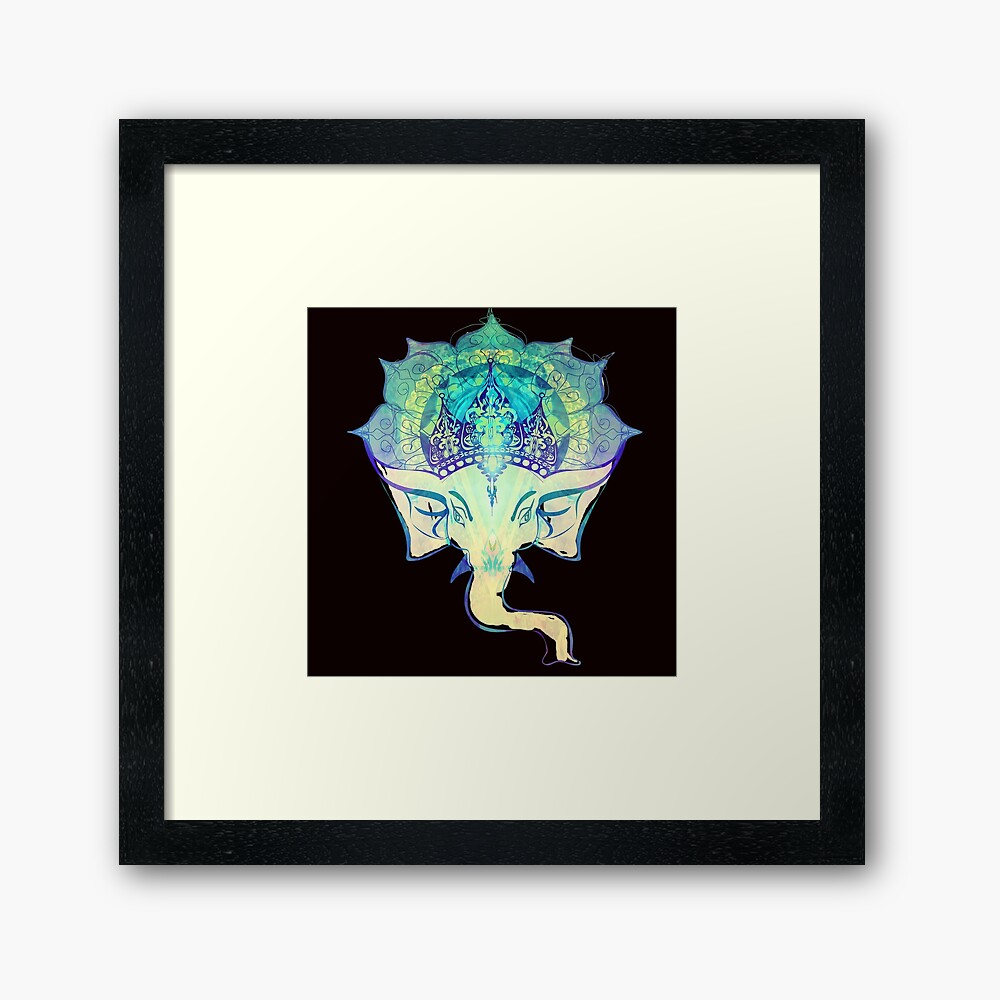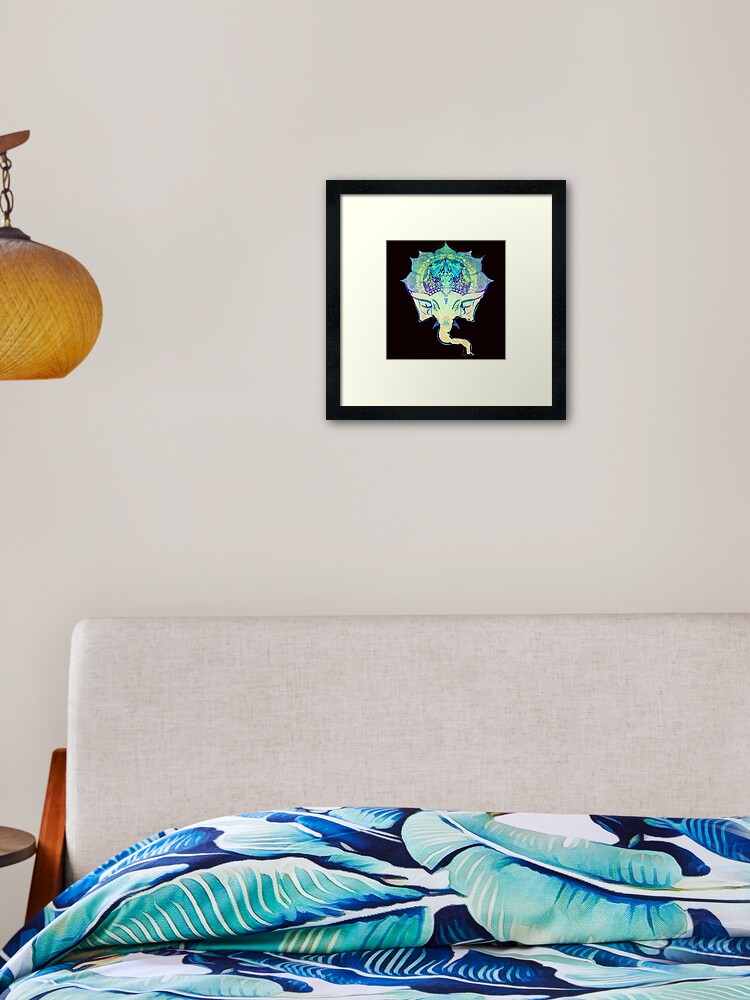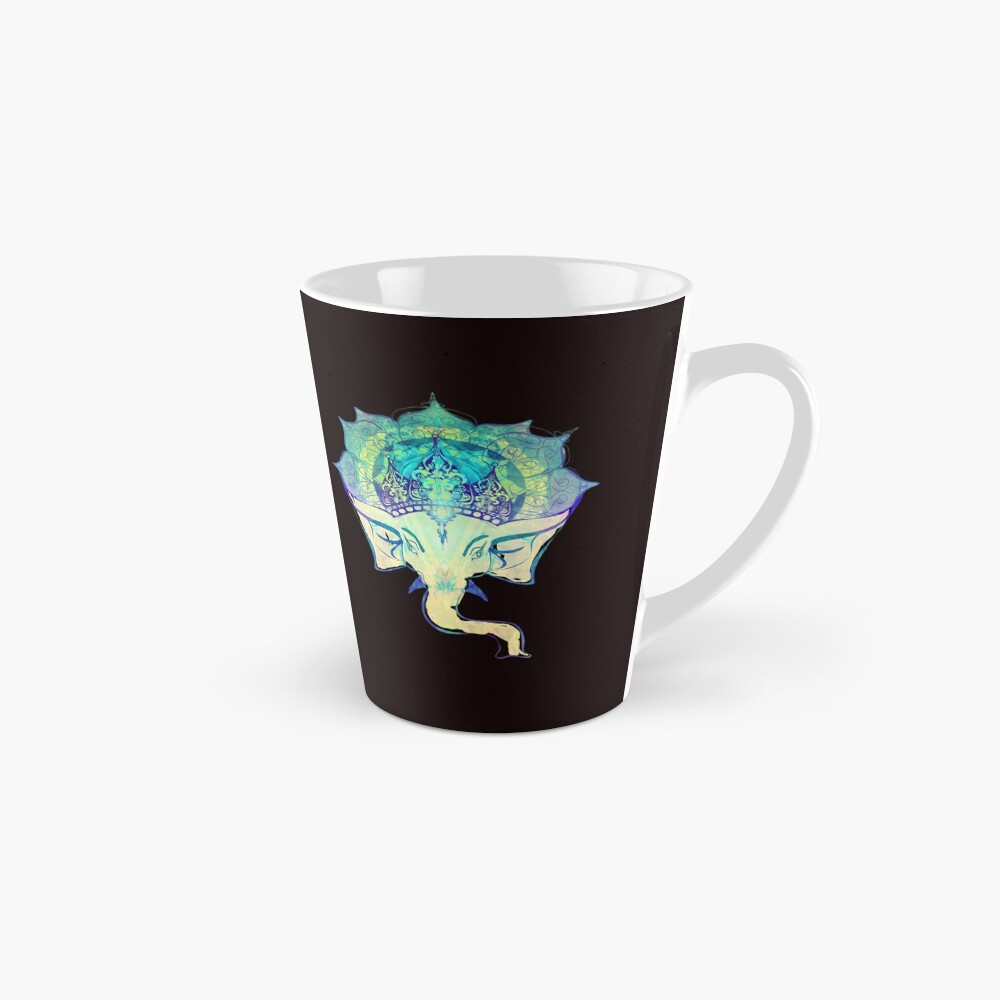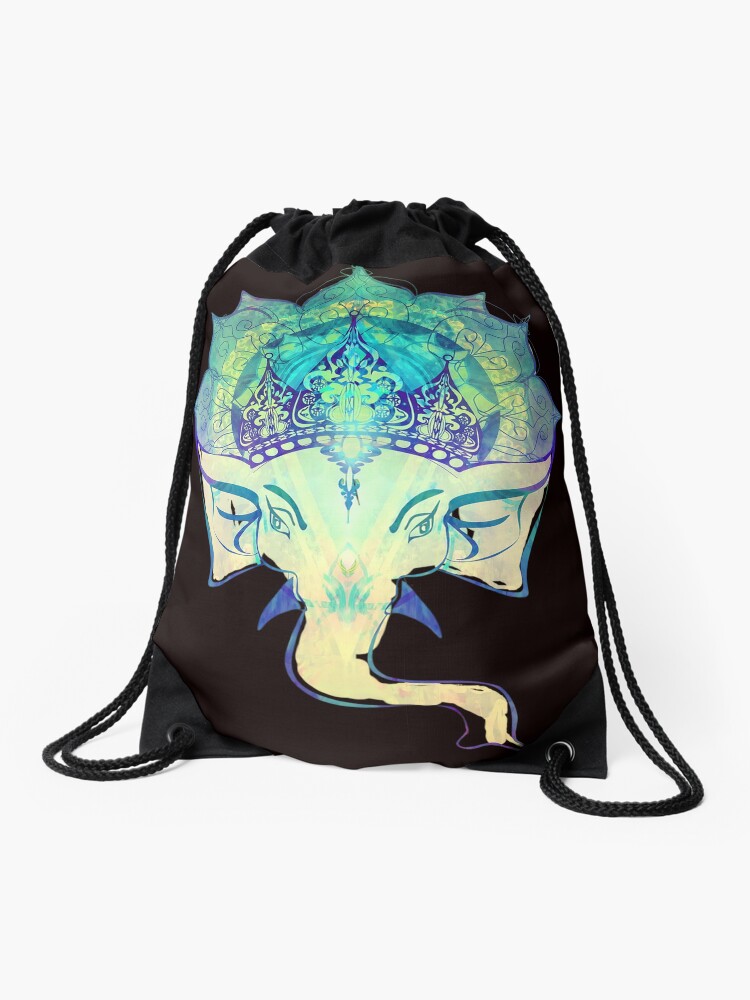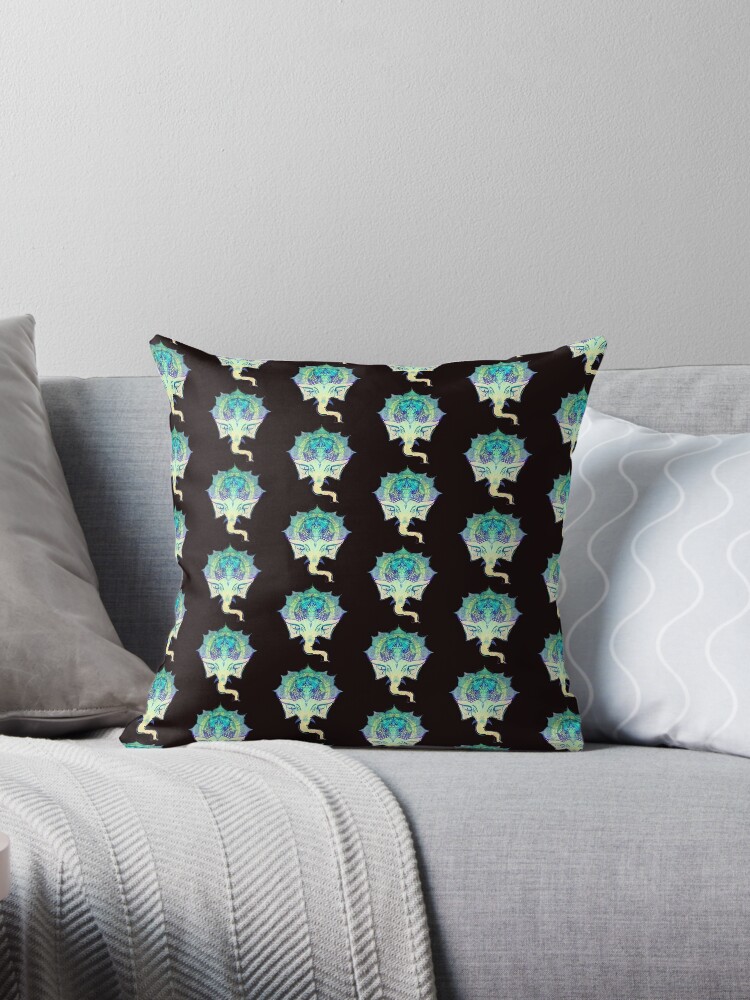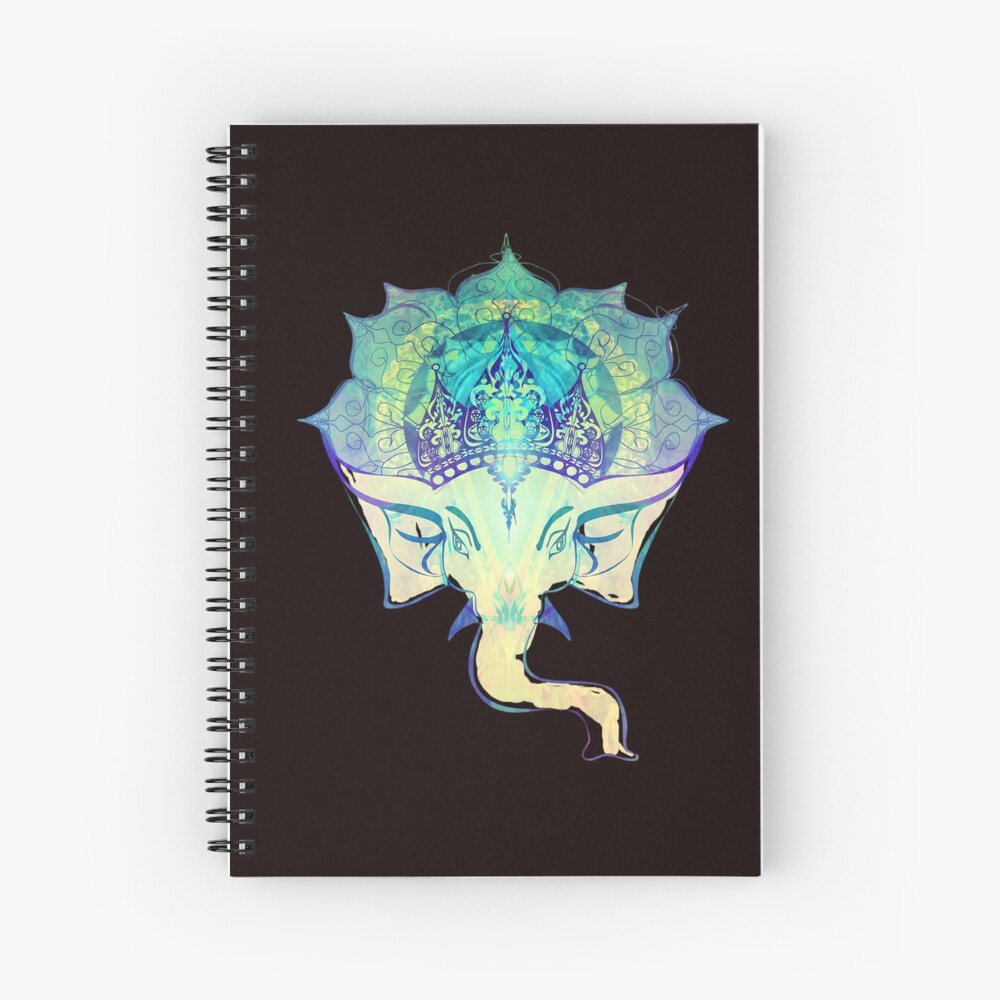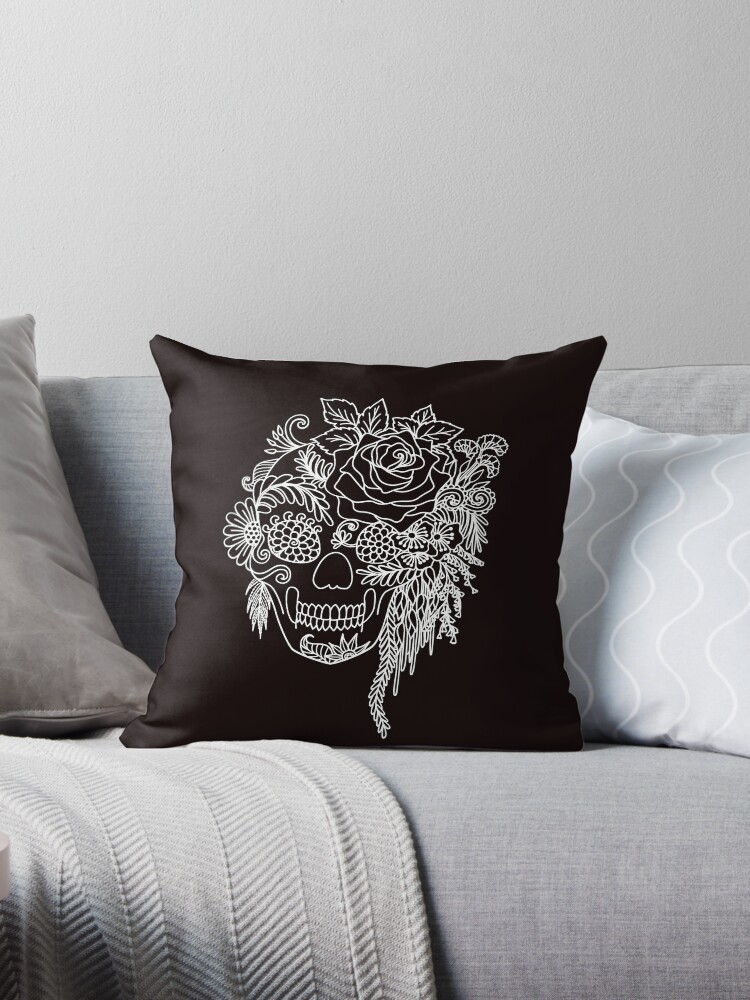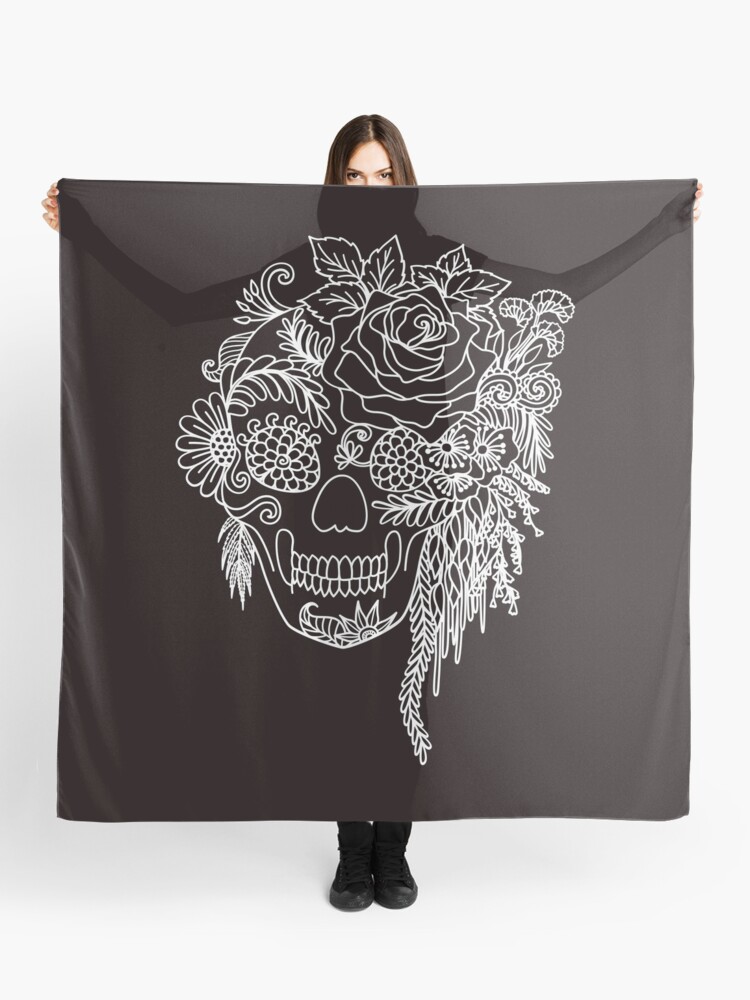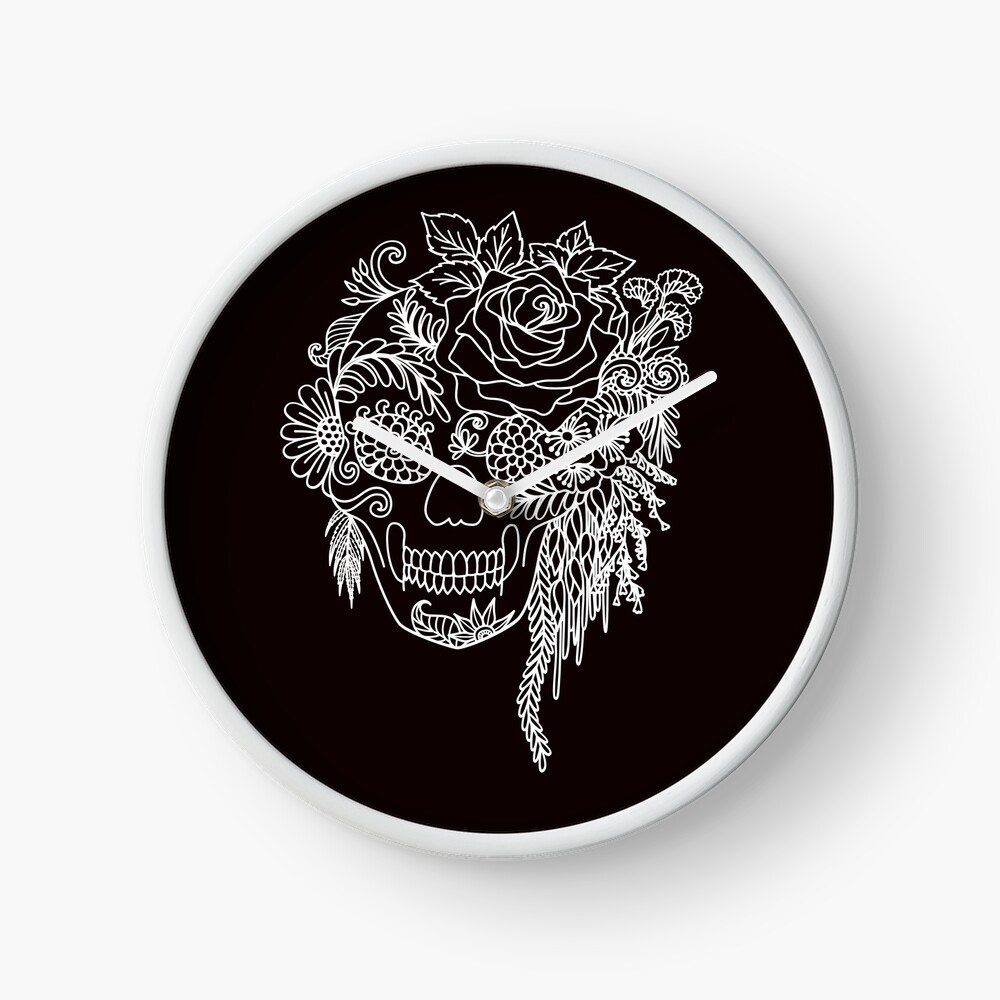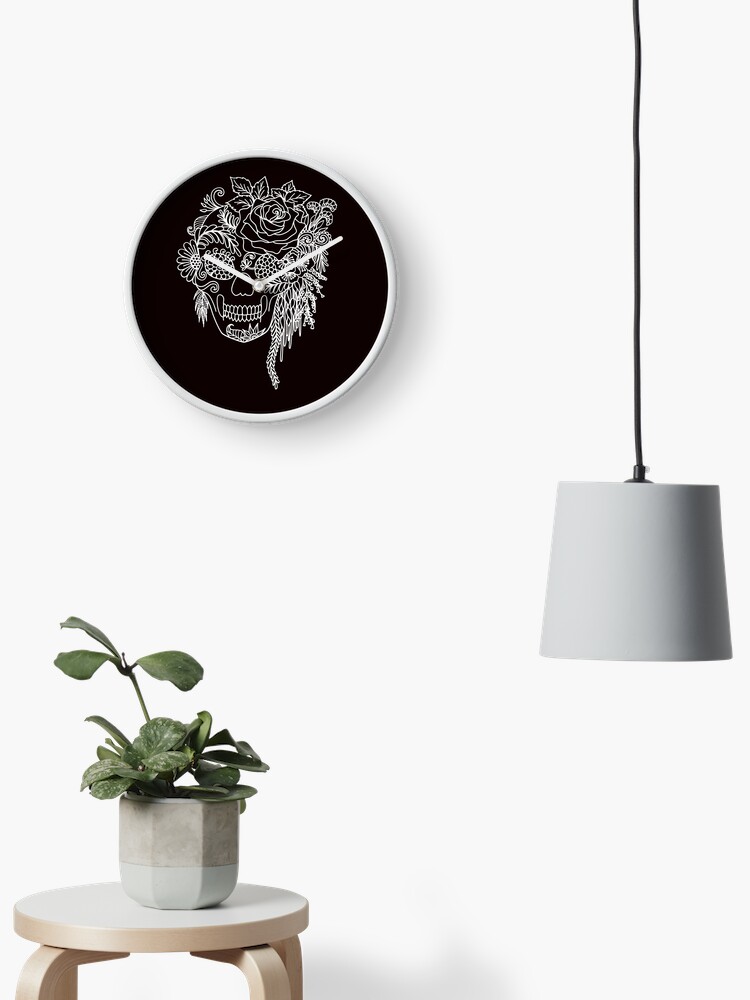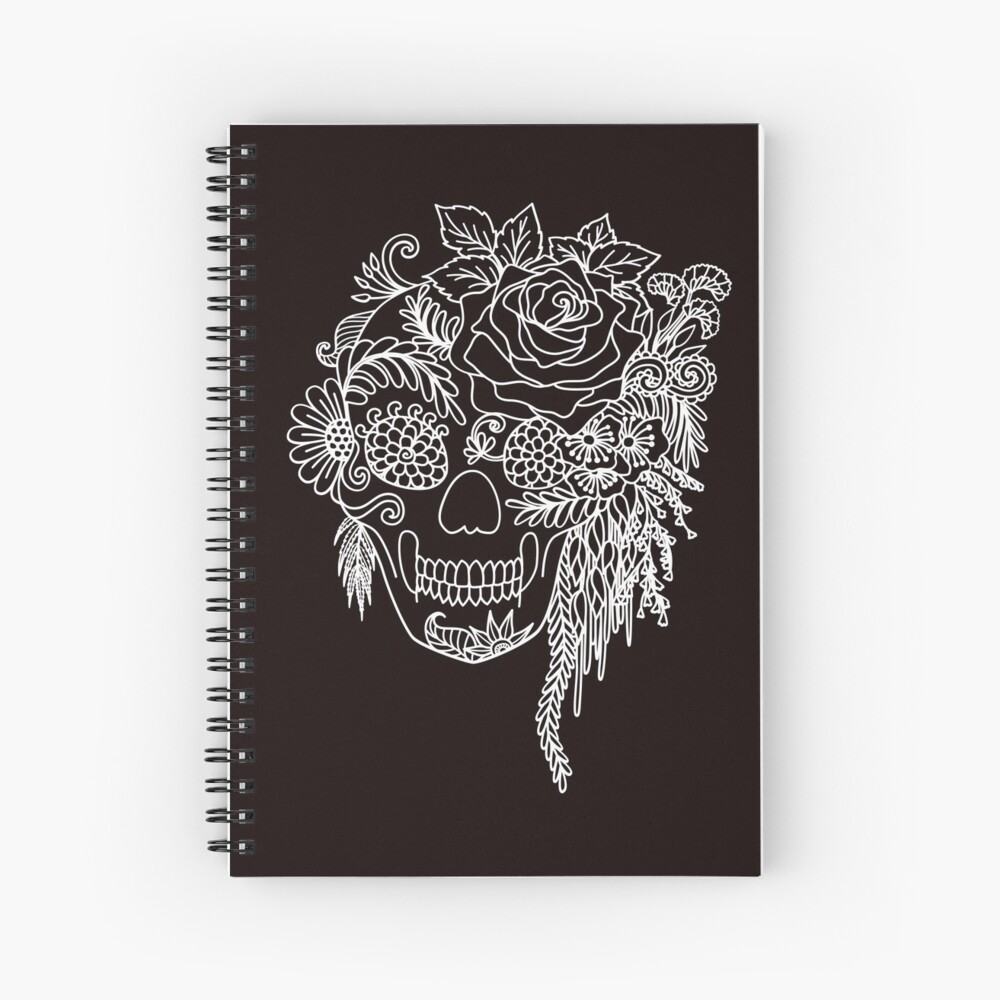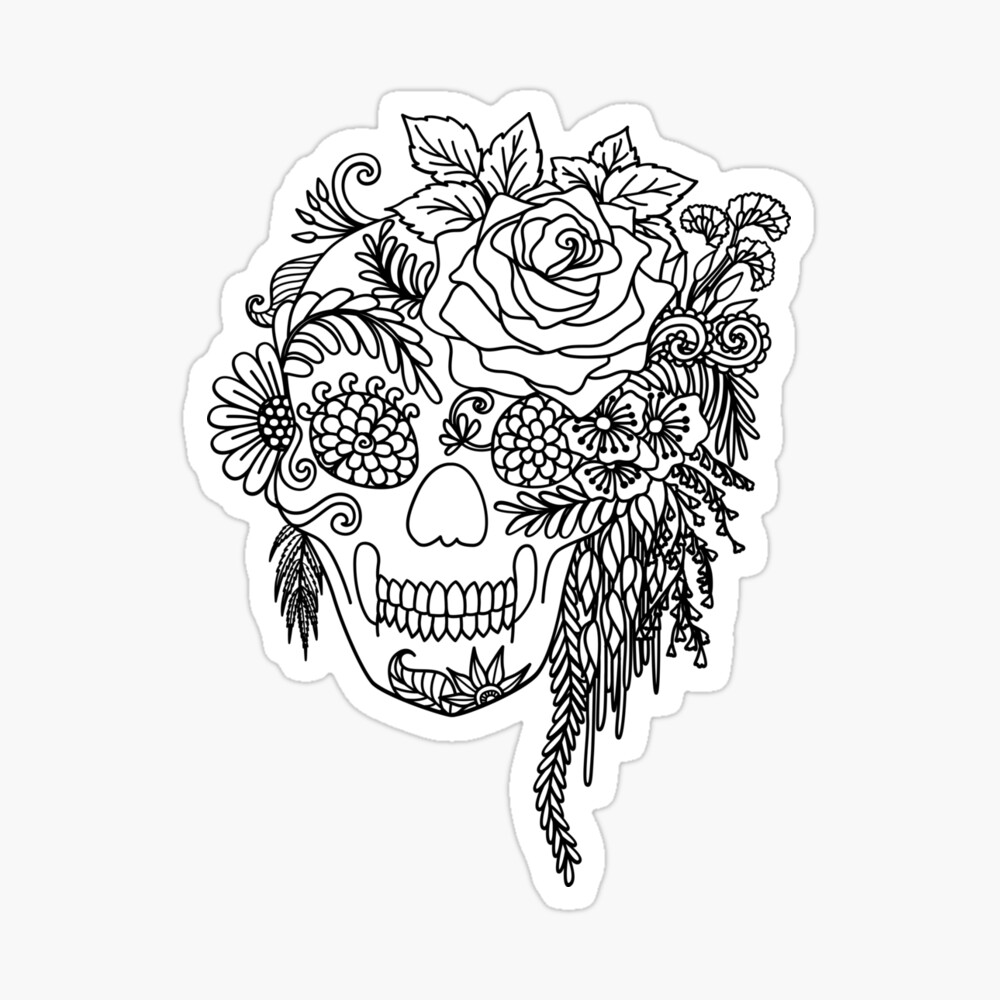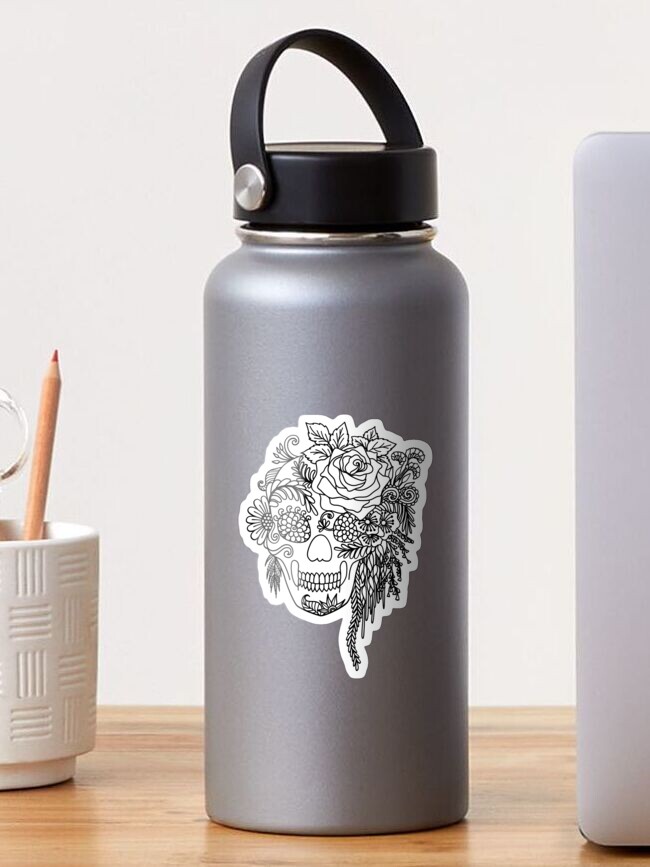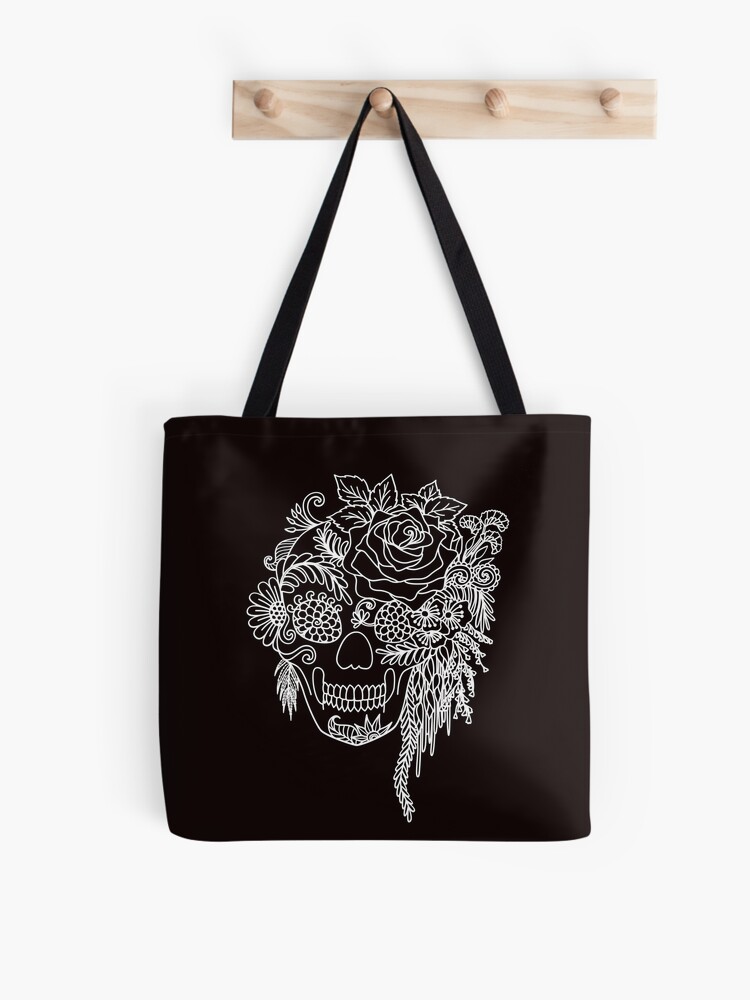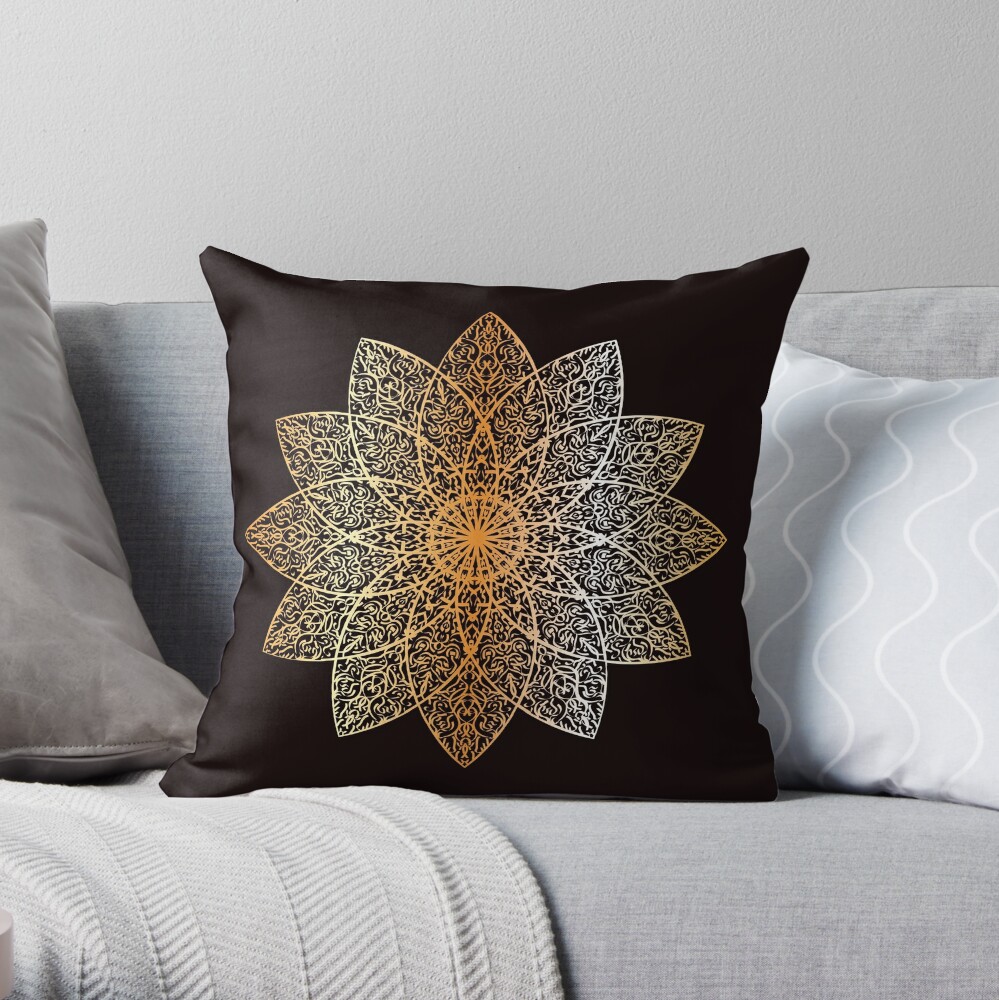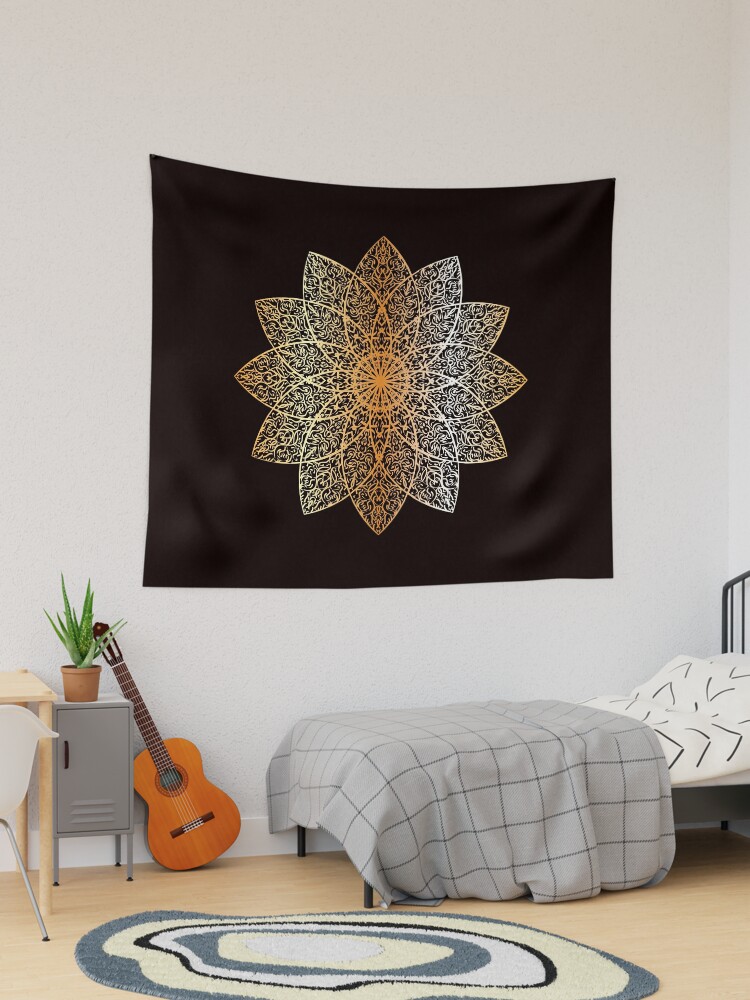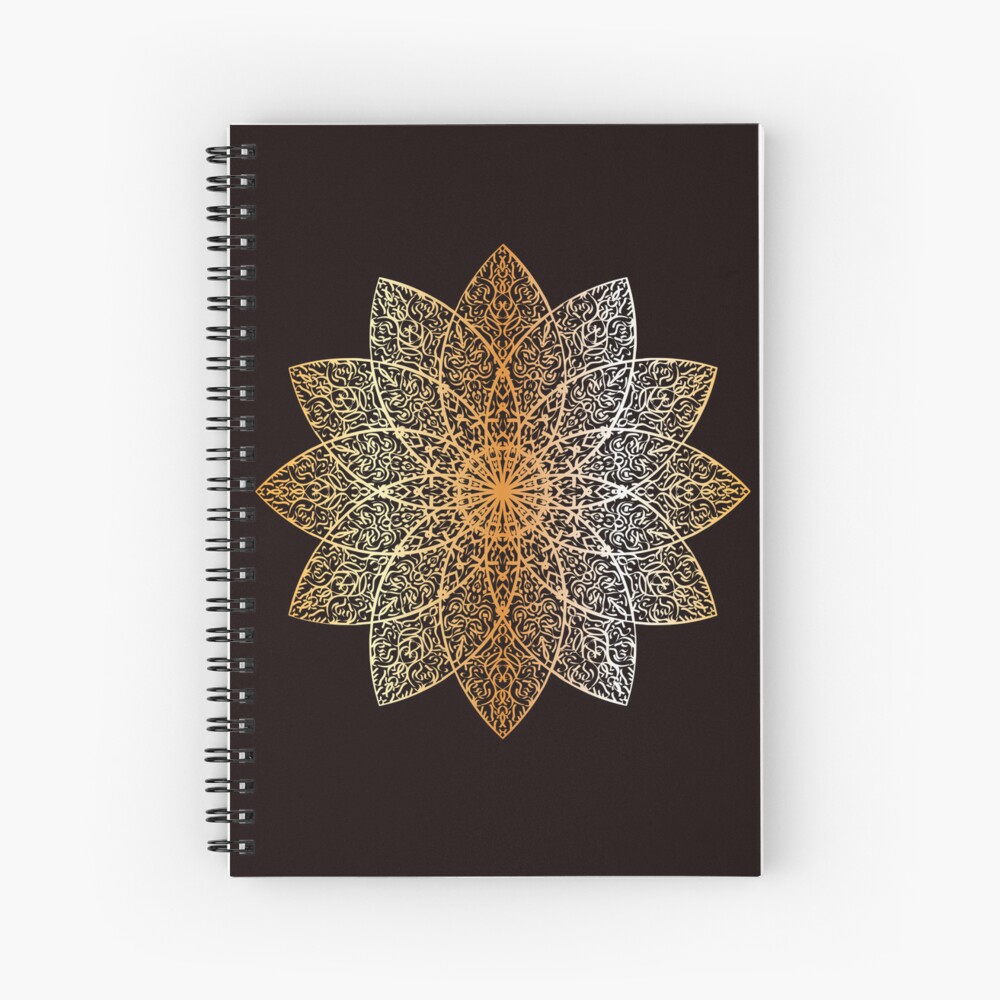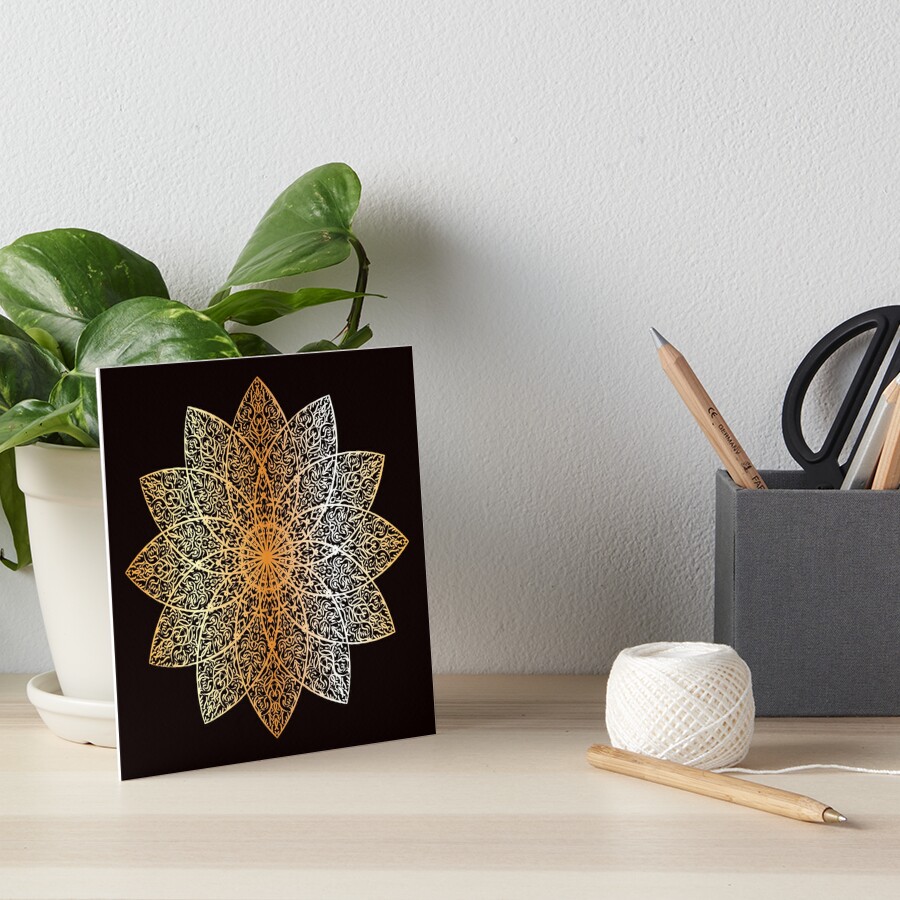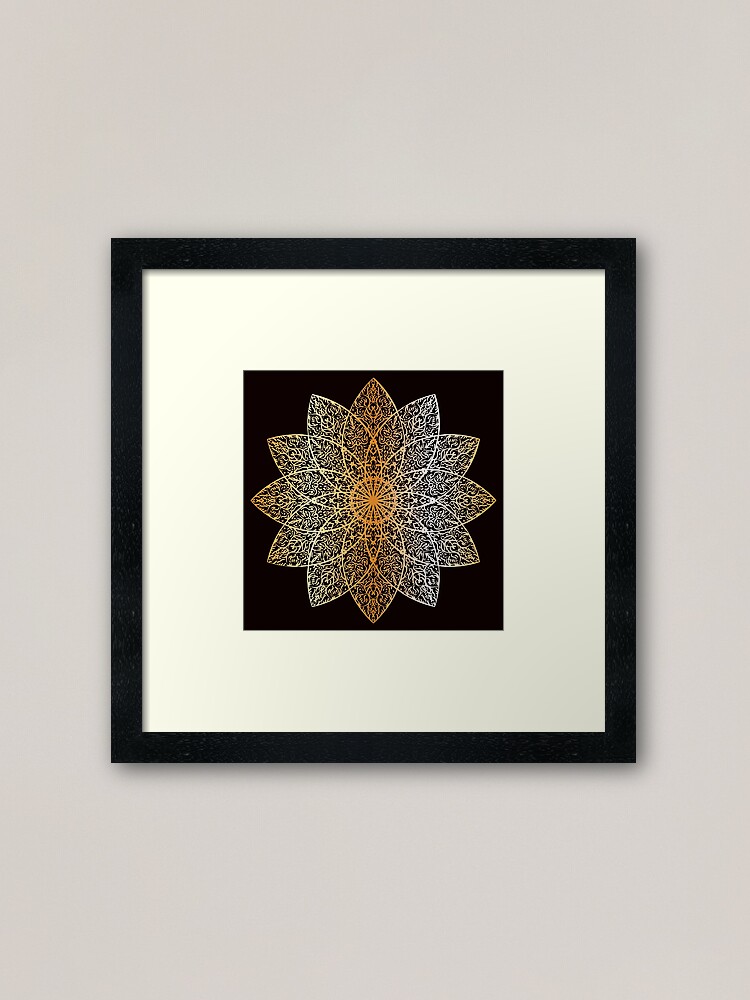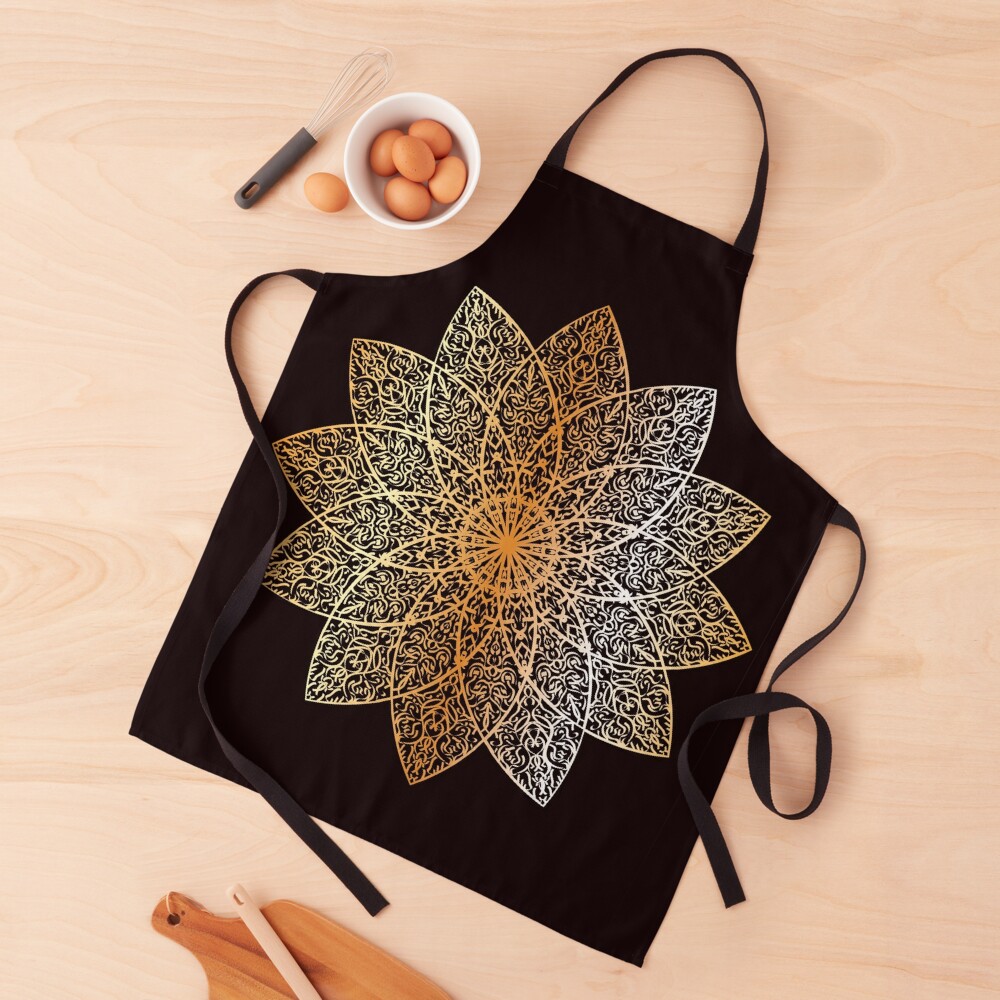- The Origins of Mandalas
- Mandalas in Buddhism
- Mandalas Around the World
- The Psychological Significance of Mandalas
- Modern Approaches of Creating Mandala
- Mandalas in Modern Therapy Practices
- Research on the Benefits of Mandala Coloring
- Influence of Mandalas on Modern Art and Design
- Mandala Patterns in Clothing and Home Décor
- Reflecting on Mandalas: Significance and Paths Forward
- Sources about Mandalas
- Quick Facts and Frequently Asked Questions

Mandalas are symbols of peace and the boundless nature of the cosmos.
They captivate you with their symmetrical designs, where every line, shape, and color holds deep significance, going beyond mere aesthetic appeal.
The term “mandala” comes from the Sanskrit word for “circle,” and these designs have served as spiritual representations and meditation tools across various cultures.
Traditionally rooted in the doctrines of Hinduism and Buddhism, the influence of mandalas extends across a range of spiritual practices, symbolizing the interconnectedness of life. They are seen as maps of the cosmos that guide individuals toward enlightenment and deeper self-understanding.
In this post, you’ll discover mandalas’ rich history and diverse meanings. We’ll look at how these sacred circles have retained their relevance both in modern spiritual practices and in the world of contemporary art. So, let’s uncover how mandalas provide a peaceful refuge from daily stress, promoting balance and wholeness through creative expression and contemplation.
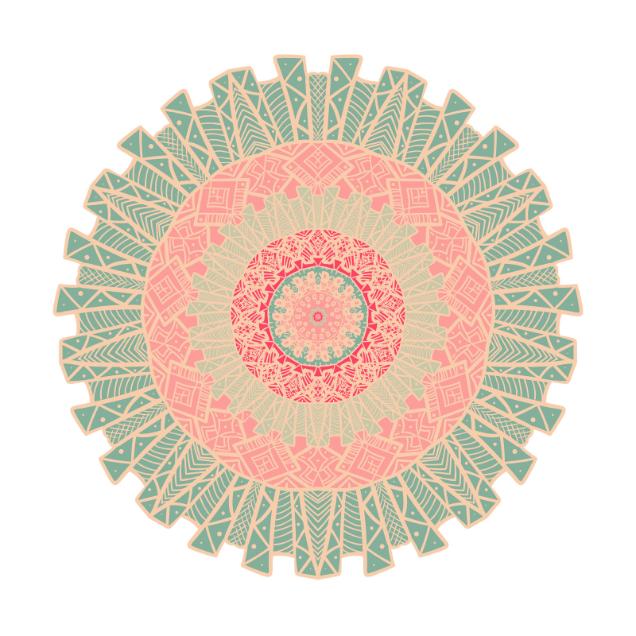
Get a free MandalaA mandala is a complex and symmetrical geometric design that encompasses a circular form and is often rich in symbolic meaning. Derived from the Sanskrit word for "circle," mandalas have been used throughout history in a variety of spiritual and cultural contexts, primarily within Hinduism and Buddhism. They serve as spiritual symbols and tools for meditation, representing the universe and More Coloring Book now!
The Origins of Mandalas
Mandalas originated thousands of years ago. From the beginning, they served as more than just art, a means to connect with the divine and the inner self. The etymology of the term ‘mandala’ comes from the ancient Sanskrit word for “circle,” emblematic of wholeness and the universe’s infinite nature. Their ancient roots suggest that these designs were initially used during rituals and as spiritual guidance tools, allowing individuals to focus deeply and meditate.
The creation and use of mandalas have been documented as a practice that began on the Indian subcontinent. Here, mandalas were initially used in ceremonial rites, serving as a symbol of the universe in a metaphysical sense and as a tool for consecrating sacred spaces. This use reflects a deep cultural embodiment of unity and harmony, principles deeply woven into the social and spiritual foundations of early societies.
As cultural and trade exchanges flourished, the concept of the mandalaA mandala is a complex and symmetrical geometric design that encompasses a circular form and is often rich in symbolic meaning. Derived from the Sanskrit word for "circle," mandalas have been used throughout history in a variety of spiritual and cultural contexts, primarily within Hinduism and Buddhism. They serve as spiritual symbols and tools for meditation, representing the universe and More spread from India to various parts of Asia. Each region adapted its aesthetics and spiritual significance to local traditions and religious practices.
In Tibet, the mandalaA mandala is a complex and symmetrical geometric design that encompasses a circular form and is often rich in symbolic meaning. Derived from the Sanskrit word for "circle," mandalas have been used throughout history in a variety of spiritual and cultural contexts, primarily within Hinduism and Buddhism. They serve as spiritual symbols and tools for meditation, representing the universe and More became a critical element of spiritual ritual, often used in elaborate ceremonies to promote peace and healing. In these contexts, the mandalaA mandala is a complex and symmetrical geometric design that encompasses a circular form and is often rich in symbolic meaning. Derived from the Sanskrit word for "circle," mandalas have been used throughout history in a variety of spiritual and cultural contexts, primarily within Hinduism and Buddhism. They serve as spiritual symbols and tools for meditation, representing the universe and More is meticulously created with colored sands and, upon completion, ceremoniously dismantled to symbolize the impermanence of life.
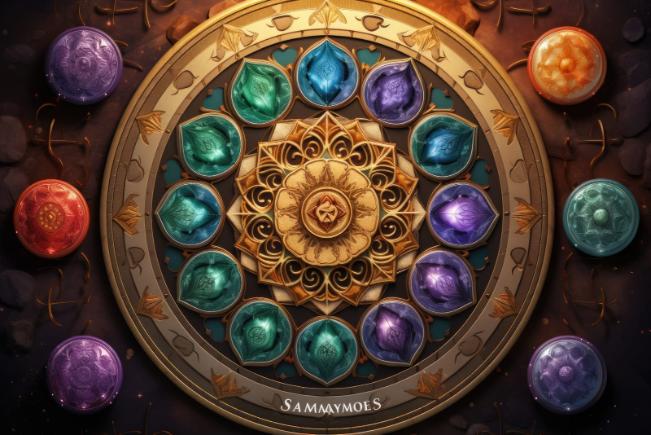
In other regions, like Japan and China, the influence of mandalas intersected with local religious practices, leading to unique interpretations and uses. These adaptations illustrate the flexible and integrative nature of mandalaA mandala is a complex and symmetrical geometric design that encompasses a circular form and is often rich in symbolic meaning. Derived from the Sanskrit word for "circle," mandalas have been used throughout history in a variety of spiritual and cultural contexts, primarily within Hinduism and Buddhism. They serve as spiritual symbols and tools for meditation, representing the universe and More art, showing how a single spiritual tool can be reinterpreted across cultural boundaries, acquiring new meanings and significance.
This cultural spread highlights the mandala’s role: Not only was it a spiritual and ritualistic symbol but it also served as a medium of cultural expression and exchange. The journey of the mandalaA mandala is a complex and symmetrical geometric design that encompasses a circular form and is often rich in symbolic meaning. Derived from the Sanskrit word for "circle," mandalas have been used throughout history in a variety of spiritual and cultural contexts, primarily within Hinduism and Buddhism. They serve as spiritual symbols and tools for meditation, representing the universe and More across Asia is a testament to its enduring relevance and its ability to convey essential spiritual truths across diverse cultures. This broad adoption and adaptation underscore the universal appeal of mandalas, reflecting a shared human quest for understanding and spiritual connection.
Through the ages, mandalas have continued to evolve. Yet they remain a powerful symbol of unity and introspection, revered for their ability to guide practitioners toward deeper understanding and peace.
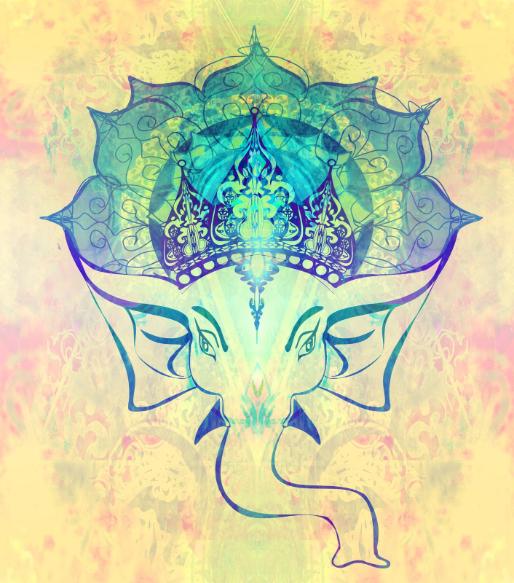
Mandalas hold a significant place in Hinduism. Here they serve as symbolic representations in rituals and as essential tools in meditation and spiritual practices. Being more than just art, these geometric designs are imbued with deep spiritual meaning and are used to facilitate spiritual growth and enlightenment.
In Hindu rituals, mandalas are often constructed as Yantras, intricate geometric designs that serve as channels for cosmic energies. These Yantras are used in various puja ceremonies—religious rituals to honor and worship deities. Each design element within a mandalaA mandala is a complex and symmetrical geometric design that encompasses a circular form and is often rich in symbolic meaning. Derived from the Sanskrit word for "circle," mandalas have been used throughout history in a variety of spiritual and cultural contexts, primarily within Hinduism and Buddhism. They serve as spiritual symbols and tools for meditation, representing the universe and More or Yantra is symbolic, representing philosophical concepts and divine manifestations. For example, the center point, or “Bindu,” is a common feature in many mandalas, symbolizing the unity that underlies all the cosmos.
Mandalas are also integral to the practice of meditation in Hinduism. They are tools that help the practitioner focus their mind and aid in spiritual contemplation. By meditating on the mandalaA mandala is a complex and symmetrical geometric design that encompasses a circular form and is often rich in symbolic meaning. Derived from the Sanskrit word for "circle," mandalas have been used throughout history in a variety of spiritual and cultural contexts, primarily within Hinduism and Buddhism. They serve as spiritual symbols and tools for meditation, representing the universe and More, one can push the boundaries of ordinary perception and ascend to higher levels of consciousness. The visual abstraction of a mandalaA mandala is a complex and symmetrical geometric design that encompasses a circular form and is often rich in symbolic meaning. Derived from the Sanskrit word for "circle," mandalas have been used throughout history in a variety of spiritual and cultural contexts, primarily within Hinduism and Buddhism. They serve as spiritual symbols and tools for meditation, representing the universe and More helps to withdraw the mind from worldly distractions and center it on spiritual matters. Likewise, the process of creating a mandalaA mandala is a complex and symmetrical geometric design that encompasses a circular form and is often rich in symbolic meaning. Derived from the Sanskrit word for "circle," mandalas have been used throughout history in a variety of spiritual and cultural contexts, primarily within Hinduism and Buddhism. They serve as spiritual symbols and tools for meditation, representing the universe and More is itself meditative, requiring precise and mindful movements that help to stabilize the mind and foster a state of spiritual awakening.
What is more, mandalas are used in Hinduism to represent the complexity of the universe and its divine creation. They are maps of the cosmos, detailed in their representation of the world not only physically but also spiritually. Sometimes gods are arranged within certain mandalas, depicting different aspects of the universe or the various attributes of the divine, and guiding the practitioner in their spiritual journey to understand the profound truths of existence.
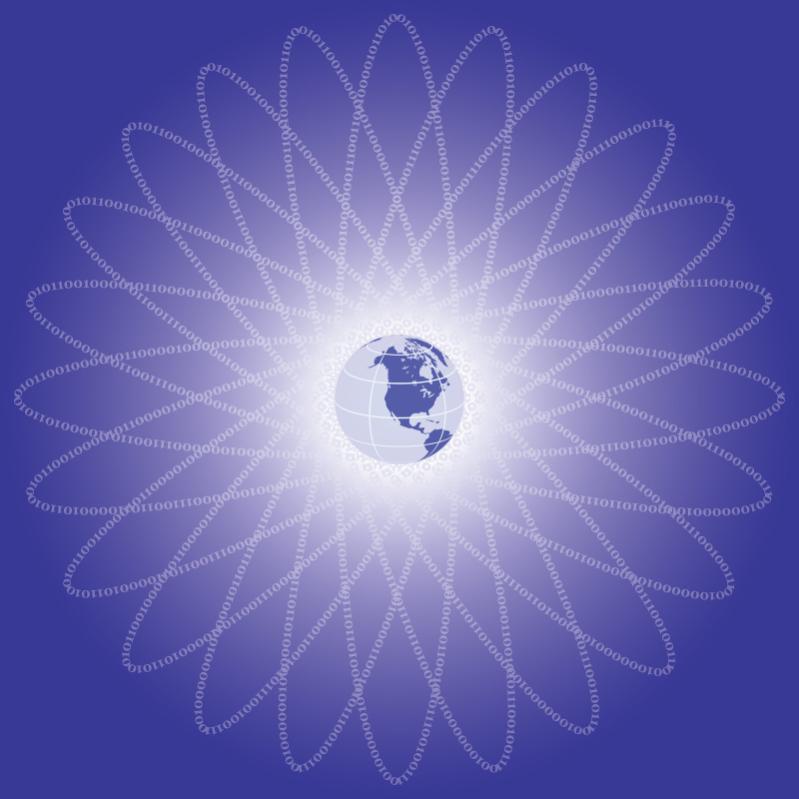
Mandalas in Buddhism
Similarly, in Buddhism, particularly within Tibetan traditions, mandalas are both artistic expressions and profound spiritual tools. They play a key role in meditation practices and are pivotal in teaching the principles of Buddhism, serving as metaphysical maps and symbols of enlightenment.
Tibetan Buddhism uses mandalas most extensively as instruments for meditation and ritual. These mandalas are often constructed from colored sand and represent the universe in divine form. Meticulous and meditative, the creation process requires monks to carefully place each grain of sand. This practice embodies the Buddhist teachings on impermanence: After days or weeks of creation, the mandalaA mandala is a complex and symmetrical geometric design that encompasses a circular form and is often rich in symbolic meaning. Derived from the Sanskrit word for "circle," mandalas have been used throughout history in a variety of spiritual and cultural contexts, primarily within Hinduism and Buddhism. They serve as spiritual symbols and tools for meditation, representing the universe and More is destroyed in a ritual, dispersing the sand in a nearby river or stream. It symbolizes the cycle of life and the temporary nature of material things, echoing the Buddhist concept that attachment leads to suffering.
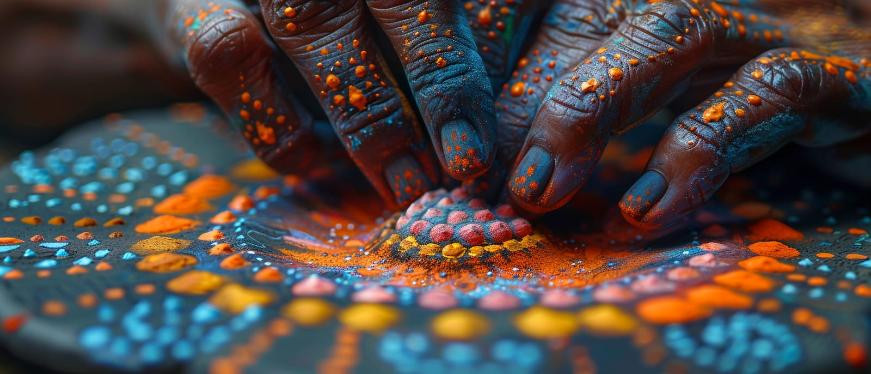
Moreover, mandalas serve as a visual aid during meditation, helping practitioners to visualize how they can transform their ordinary minds into an enlightened mind. The delicate designs of the mandalaA mandala is a complex and symmetrical geometric design that encompasses a circular form and is often rich in symbolic meaning. Derived from the Sanskrit word for "circle," mandalas have been used throughout history in a variety of spiritual and cultural contexts, primarily within Hinduism and Buddhism. They serve as spiritual symbols and tools for meditation, representing the universe and More represent different aspects of enlightenment and the universe, guiding meditators through complex spiritual concepts and stages of deep contemplation. The center of the mandalaA mandala is a complex and symmetrical geometric design that encompasses a circular form and is often rich in symbolic meaning. Derived from the Sanskrit word for "circle," mandalas have been used throughout history in a variety of spiritual and cultural contexts, primarily within Hinduism and Buddhism. They serve as spiritual symbols and tools for meditation, representing the universe and More is usually depicted as a palace with four gates, representing the journey through the four noble truths towards the enlightenment at the center. Meditating on the mandalaA mandala is a complex and symmetrical geometric design that encompasses a circular form and is often rich in symbolic meaning. Derived from the Sanskrit word for "circle," mandalas have been used throughout history in a variety of spiritual and cultural contexts, primarily within Hinduism and Buddhism. They serve as spiritual symbols and tools for meditation, representing the universe and More allows the practitioner to journey inward, symbolically entering and passing through these gates.
Mandalas are also used as teaching tools in Buddhism. They encapsulate the entire Buddhist philosophy within their designs, including teachings about the cycle of life, the interconnectedness of all beings, and the path to enlightenment. Each geometric shape, line, and color in a mandalaA mandala is a complex and symmetrical geometric design that encompasses a circular form and is often rich in symbolic meaning. Derived from the Sanskrit word for "circle," mandalas have been used throughout history in a variety of spiritual and cultural contexts, primarily within Hinduism and Buddhism. They serve as spiritual symbols and tools for meditation, representing the universe and More has specific symbolic meanings tied to Buddhist theology. Teachers use these symbols to illustrate the teachings of the Buddha in a visual and accessible way, making complex spiritual concepts easier to understand for both monks and laypersons.
The use of mandalas in Buddhism, particularly in Tibetan practices, is a beautiful example of how art and spirituality can merge to promote deeper understanding and personal transformation. Through the use of mandalas, practitioners can explore the depths of their minds and the universe, ultimately aiming to achieve a state of complete enlightenment and peace.
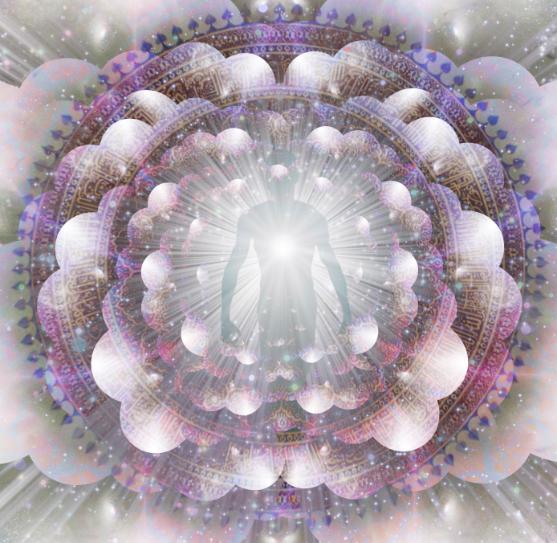
Mandalas Around the World
Mandalas are not confined to just Hinduism or Buddhism; their fundamental concept and the universal appeal of circular designs have surfaced in numerous cultures around the globe, including Native American and Australian Aboriginal traditions. These similarities highlight how different societies have independently recognized the circle as a symbol of unity, wholeness, and the cosmos.
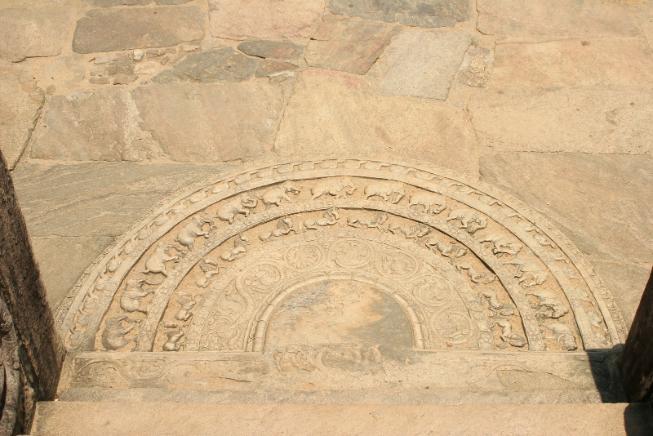
In Native American culture, circular designs frequently appear in various artistic and ceremonial contexts, embodying significant spiritual and healing properties. The medicine wheel, a mandala-like symbol, is one such example. Comprising a circle with intersecting lines, it represents the harmony and continuous cycle of life and is used in healing rituals and as a tool for guidance and protection. The wheel’s quadrants can symbolize the four directions, seasons, elements, or stages of life, mirroring the multi-layered symbolismSymbolism was a late 19th-century art movement of French, Belgian, and Russian origin. Poets and fine artists were seeking to represent absolute truths using metaphorical images in reaction against realism and naturalism. Content of both images and poetry were suggestive contents to express mystical ideas, emotions, and states of mind. Paul Gauguin, Nave Nave Mahana (1869) The term was coined More found in traditional Asian mandalas.
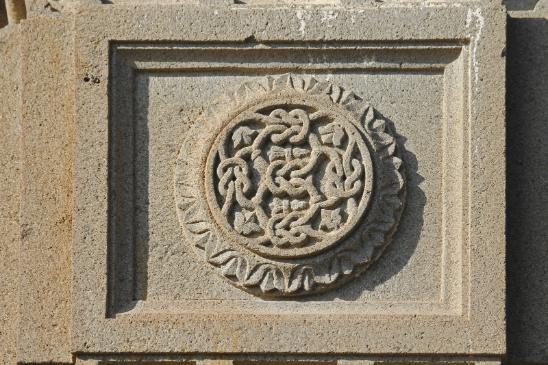
Similarly, Australian Aboriginal art features circular designs that often represent significant gathering places, waterholes, or sacred sites known as “Dreaming.” These paintings hold deep spiritual significance, serving as maps that communicate ancestral stories and the interconnectedness of all life forms within the Aboriginal cosmology. The circles in these artworks often connect with various lines and dots, creating a narrative that describes the travels of ancestral spirits and the creation of the land.
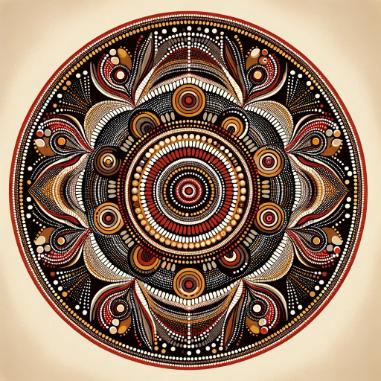
The universal appeal of circular designs in these cultures speaks to a collective human fascination with the circle as a shape that embodies infinity, without beginning or end. It resonates across various human societies as it naturally appears in our environment—the Earth, the sun, the moon, and the observable cycles of nature and time.
The circular designs in spiritual and cultural artworks suggest a shared understanding and reverence for the cosmos and life’s cycles: They reveal deep-rooted psychological and existential themes that transcend geographical and cultural boundaries.

The Psychological Significance of Mandalas
Mandalas hold a special place not only in spiritual and cultural areas. They are also common in the field of psychology, where they have been explored extensively by Carl Jung, among others. Jung, a Swiss psychiatrist and the founder of analytical psychology, recognized mandalas as powerful symbols of the self and used them as tools for individuation and personal transformation.

Carl Jung discovered the psychological significance of mandalas through his own inner experiences and noted that similar patterns appeared in his patients’ dreams. He interpreted these mandalas as representations of the subconscious mind. According to Jung, the central point of a mandalaA mandala is a complex and symmetrical geometric design that encompasses a circular form and is often rich in symbolic meaning. Derived from the Sanskrit word for "circle," mandalas have been used throughout history in a variety of spiritual and cultural contexts, primarily within Hinduism and Buddhism. They serve as spiritual symbols and tools for meditation, representing the universe and More, often referred to as the “self,” serves as an anchor of the psyche, around which various aspects of the personality are organized. Jung believed that the act of drawing mandalas helped to harmonize the psychological state of an individual by bringing chaotic and conflicting emotions and thoughts into order.
Jung often encouraged his patients to create their own mandalas as a form of therapy. This process provided a non-verbal means of expressing difficult or inexpressible emotions, leading to insight and self-awareness. By externalizing complex feelings through shapes and colors, individuals could step back and gain a new perspective on their inner experiences. This practice proved particularly beneficial in revealing the underlying patterns of an individual’s psychological condition and helping in the healing process.
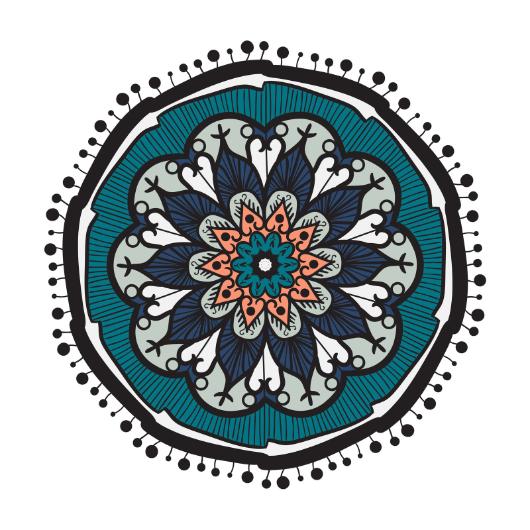
Beyond Jung’s analytical use, mandalas have found a broader application in modern therapeutic settings as tools for meditation and relaxation. The very act of coloring mandalas is used in various forms of therapy to calm the mind and alleviate stress. The repetitive motions and the focus required to color intricate designs can act as a form of active meditation, promoting a peaceful state of mind. This can be particularly helpful for individuals suffering from anxiety, depression, or stress, as it provides a simple and accessible way to disconnect from immediate concerns and focus inwardly in a constructive and soothing manner.
The therapeutic use of mandalas extends further into group therapy and educational environments, where creating mandalas can help enhance focus, boost creativity, and encourage a sense of connectedness among participants. These activities allow individuals to explore personal meanings and insights, promoting not only psychological healing but also personal growth and interpersonal understanding.
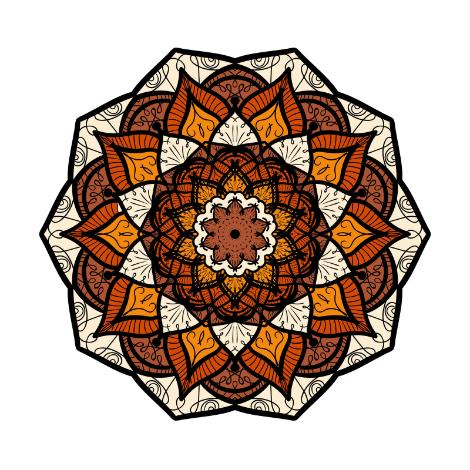
Modern Approaches of Creating Mandala
In the modern era, the art of mandalaA mandala is a complex and symmetrical geometric design that encompasses a circular form and is often rich in symbolic meaning. Derived from the Sanskrit word for "circle," mandalas have been used throughout history in a variety of spiritual and cultural contexts, primarily within Hinduism and Buddhism. They serve as spiritual symbols and tools for meditation, representing the universe and More creation has embraced digital tools and platforms, making it accessible to a broader audience and allowing for innovative expressions of traditional forms.
Digital mandalaA mandala is a complex and symmetrical geometric design that encompasses a circular form and is often rich in symbolic meaning. Derived from the Sanskrit word for "circle," mandalas have been used throughout history in a variety of spiritual and cultural contexts, primarily within Hinduism and Buddhism. They serve as spiritual symbols and tools for meditation, representing the universe and More creation involves the use of artificial intelligence or graphic design software and apps that offer a range of customizable templates and tools. These digital platforms enable artists and enthusiasts to create intricate mandalaA mandala is a complex and symmetrical geometric design that encompasses a circular form and is often rich in symbolic meaning. Derived from the Sanskrit word for "circle," mandalas have been used throughout history in a variety of spiritual and cultural contexts, primarily within Hinduism and Buddhism. They serve as spiritual symbols and tools for meditation, representing the universe and More designs with ease, experimenting with an endless array of colors and patterns. The digital approach not only saves time but also allows for complex designs that can be easily edited and replicated.
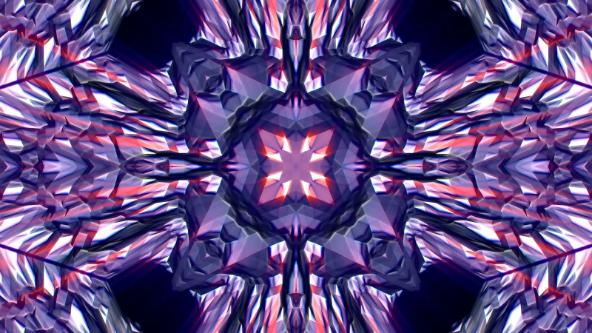
Moreover, the advent of interactive websites and mobile apps has popularized mandalaA mandala is a complex and symmetrical geometric design that encompasses a circular form and is often rich in symbolic meaning. Derived from the Sanskrit word for "circle," mandalas have been used throughout history in a variety of spiritual and cultural contexts, primarily within Hinduism and Buddhism. They serve as spiritual symbols and tools for meditation, representing the universe and More coloring as a form of digital meditation and relaxation. Users can choose from pre-designed mandalas to color, using a tablet or smartphone to engage in this calming activity anywhere and at any time. This form of digital engagement with mandalas adds a layer of convenience and accessibility to the traditional practice, appealing to people of all ages seeking a creative outlet or a moment of peace in their busy lives.
The evolution of mandalaA mandala is a complex and symmetrical geometric design that encompasses a circular form and is often rich in symbolic meaning. Derived from the Sanskrit word for "circle," mandalas have been used throughout history in a variety of spiritual and cultural contexts, primarily within Hinduism and Buddhism. They serve as spiritual symbols and tools for meditation, representing the universe and More creation from traditional to modern methods illustrates the adaptability and enduring appeal of mandalas. Whether through ancient ritualistic practices or contemporary digital adaptations, the creation of mandalas continues to be a source of spiritual fulfillment, artistic expression, and psychological relief.
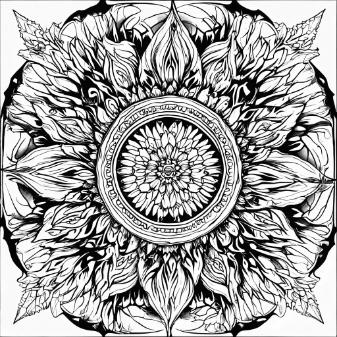
Mandalas in Modern Therapy Practices
In contemporary therapy, mandalas are often used as a means of art therapy, providing clients a non-verbal mode of expression that can reveal underlying emotions and conflicts. In the tradition of Jung, therapists use mandalaA mandala is a complex and symmetrical geometric design that encompasses a circular form and is often rich in symbolic meaning. Derived from the Sanskrit word for "circle," mandalas have been used throughout history in a variety of spiritual and cultural contexts, primarily within Hinduism and Buddhism. They serve as spiritual symbols and tools for meditation, representing the universe and More creation to help individuals process feelings and experiences that might be difficult to articulate with words. This form of expression can be particularly powerful in uncovering subconscious thoughts and patterns, offering insights both to the individual and the therapist. The process of drawing and coloring mandalas encourages concentration and mindfulness, which can reduce symptoms of anxiety and depression, promote relaxation, and aid in coping with stress and trauma.
Therapeutic sessions might involve clients creating their own mandalas from scratch or coloring in pre-drawn designs. Both activities require focus and provide a sense of accomplishment and calm. The symmetry and balance required to create a mandalaA mandala is a complex and symmetrical geometric design that encompasses a circular form and is often rich in symbolic meaning. Derived from the Sanskrit word for "circle," mandalas have been used throughout history in a variety of spiritual and cultural contexts, primarily within Hinduism and Buddhism. They serve as spiritual symbols and tools for meditation, representing the universe and More can mirror the desired internal state of the creator, promoting mental equilibrium and emotional stability.
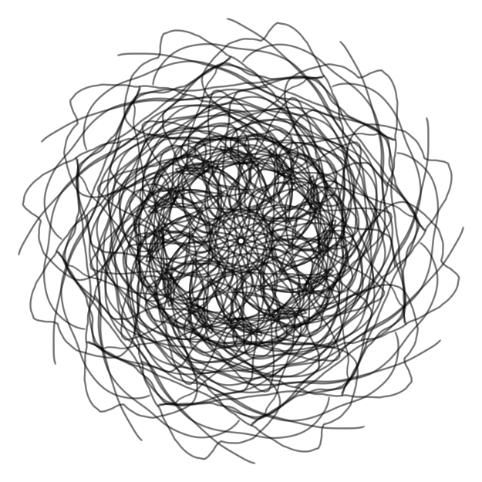
Research on the Benefits of Mandala Coloring
Several research studies have underscored the benefits of mandalaA mandala is a complex and symmetrical geometric design that encompasses a circular form and is often rich in symbolic meaning. Derived from the Sanskrit word for "circle," mandalas have been used throughout history in a variety of spiritual and cultural contexts, primarily within Hinduism and Buddhism. They serve as spiritual symbols and tools for meditation, representing the universe and More coloring in various therapeutic settings. One notable study published in the journal “Art Therapy” found that coloring mandalas or other complex geometric patterns can be more effective at reducing anxiety than coloring on a blank page or coloring plainer designs. This research highlights how the structured nature of mandalas can help to contain and structure mental chaos, allowing for a therapeutic release of anxiety.
Another case study involved individuals suffering from long-term stress and mental fatigue. Participants engaged in daily mandalaA mandala is a complex and symmetrical geometric design that encompasses a circular form and is often rich in symbolic meaning. Derived from the Sanskrit word for "circle," mandalas have been used throughout history in a variety of spiritual and cultural contexts, primarily within Hinduism and Buddhism. They serve as spiritual symbols and tools for meditation, representing the universe and More coloring sessions reported significant decreases in their stress levels and an overall improvement in their mood and emotional well-being. These changes were attributed to the mindfulness practice encouraged by mandalaA mandala is a complex and symmetrical geometric design that encompasses a circular form and is often rich in symbolic meaning. Derived from the Sanskrit word for "circle," mandalas have been used throughout history in a variety of spiritual and cultural contexts, primarily within Hinduism and Buddhism. They serve as spiritual symbols and tools for meditation, representing the universe and More coloring, which helps to anchor the person in the present moment, away from ruminative and negative thought patterns.
Further research indicates that the benefits of mandalaA mandala is a complex and symmetrical geometric design that encompasses a circular form and is often rich in symbolic meaning. Derived from the Sanskrit word for "circle," mandalas have been used throughout history in a variety of spiritual and cultural contexts, primarily within Hinduism and Buddhism. They serve as spiritual symbols and tools for meditation, representing the universe and More coloring are not limited to reducing stress and anxiety but also include enhancing attentional focus, boosting creativity, and fostering a meditative state that can lead to improved overall health and well-being (Daudén Roquet et al., 2023; Mantzios & Giannou, 2018; Choi et al., 2021; Curry & Kasser, 2005).
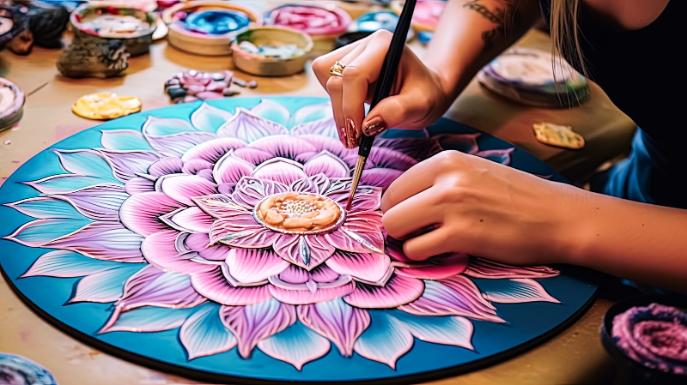
Influence of Mandalas on Modern Art and Design
In modern art, mandalas are celebrated for their complexity and balance, which artists often leverage to convey themes of unity and harmony. Many contemporary artists from Damien Hirst to Stephanie Smith incorporate mandalaA mandala is a complex and symmetrical geometric design that encompasses a circular form and is often rich in symbolic meaning. Derived from the Sanskrit word for "circle," mandalas have been used throughout history in a variety of spiritual and cultural contexts, primarily within Hinduism and Buddhism. They serve as spiritual symbols and tools for meditation, representing the universe and More motifs into their artworks, using modern techniques and materials to explore the mandala’s potential as a meditative tool and a symbol of the interconnectedness of life. These artworks often reflect personal or societal narratives, integrating traditional mandalaA mandala is a complex and symmetrical geometric design that encompasses a circular form and is often rich in symbolic meaning. Derived from the Sanskrit word for "circle," mandalas have been used throughout history in a variety of spiritual and cultural contexts, primarily within Hinduism and Buddhism. They serve as spiritual symbols and tools for meditation, representing the universe and More elements with contemporary issues, thereby creating a dialogue between ancient symbolismSymbolism was a late 19th-century art movement of French, Belgian, and Russian origin. Poets and fine artists were seeking to represent absolute truths using metaphorical images in reaction against realism and naturalism. Content of both images and poetry were suggestive contents to express mystical ideas, emotions, and states of mind. Paul Gauguin, Nave Nave Mahana (1869) The term was coined More and modern realities.
Art installations and public artworks frequently feature large-scale mandalas, created with various materials ranging from traditional paints to recycled items, reflecting the versatility and adaptability of mandalaA mandala is a complex and symmetrical geometric design that encompasses a circular form and is often rich in symbolic meaning. Derived from the Sanskrit word for "circle," mandalas have been used throughout history in a variety of spiritual and cultural contexts, primarily within Hinduism and Buddhism. They serve as spiritual symbols and tools for meditation, representing the universe and More designs. These installations beautify spaces and invite viewers to moments of contemplation and introspection, fostering a sense of community and shared experience around the artwork (Blue Canary Press; DailyArt Magazine; Mandalas for the Soul; Modern Contemporary Artwork Trends ).
Mandala Patterns in Clothing and Home Décor
In fashion, mandalaA mandala is a complex and symmetrical geometric design that encompasses a circular form and is often rich in symbolic meaning. Derived from the Sanskrit word for "circle," mandalas have been used throughout history in a variety of spiritual and cultural contexts, primarily within Hinduism and Buddhism. They serve as spiritual symbols and tools for meditation, representing the universe and More patterns have found a popular place in the design of clothing and accessories. From detailed prints on dresses and shirts to elaborate embroidery on bags and scarves, mandalaA mandala is a complex and symmetrical geometric design that encompasses a circular form and is often rich in symbolic meaning. Derived from the Sanskrit word for "circle," mandalas have been used throughout history in a variety of spiritual and cultural contexts, primarily within Hinduism and Buddhism. They serve as spiritual symbols and tools for meditation, representing the universe and More designs offer a touch of sophistication and worldly flair that appeals to diverse audiences. Fashion designers often draw on the spiritual and cultural connotations of mandalas to craft collections that speak of peace, balance, and harmony, resonating with consumers seeking depth and meaning in their apparel.
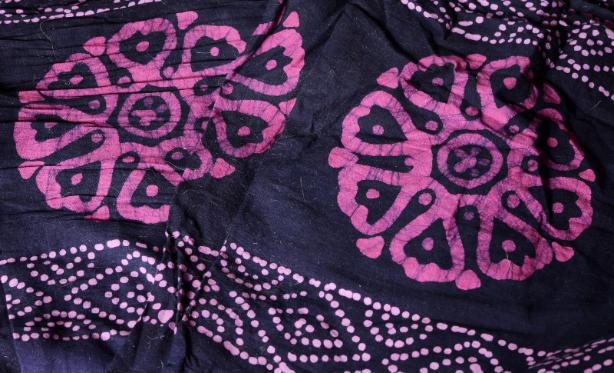
For instance, the fashion brand GearBunch has embraced mandalaA mandala is a complex and symmetrical geometric design that encompasses a circular form and is often rich in symbolic meaning. Derived from the Sanskrit word for "circle," mandalas have been used throughout history in a variety of spiritual and cultural contexts, primarily within Hinduism and Buddhism. They serve as spiritual symbols and tools for meditation, representing the universe and More designs in their apparel, particularly in activewear like leggings and sports bras. They highlight how these designs can blend functionality with the spiritual and calming influence of mandalas, making them suitable for both gym wear and casual comfort (GearBunch).
The boutique shop Psycheek has creatively incorporated mandalaA mandala is a complex and symmetrical geometric design that encompasses a circular form and is often rich in symbolic meaning. Derived from the Sanskrit word for "circle," mandalas have been used throughout history in a variety of spiritual and cultural contexts, primarily within Hinduism and Buddhism. They serve as spiritual symbols and tools for meditation, representing the universe and More designs into a variety of products, with their standout item being the Skull MandalaA mandala is a complex and symmetrical geometric design that encompasses a circular form and is often rich in symbolic meaning. Derived from the Sanskrit word for "circle," mandalas have been used throughout history in a variety of spiritual and cultural contexts, primarily within Hinduism and Buddhism. They serve as spiritual symbols and tools for meditation, representing the universe and More. This design uniquely merges the edgy allure of skulls with the intricate beauty of mandalas, presenting a bold yet spiritual aesthetic.
Furthermore, Bong Diva discusses the integration of mandalaA mandala is a complex and symmetrical geometric design that encompasses a circular form and is often rich in symbolic meaning. Derived from the Sanskrit word for "circle," mandalas have been used throughout history in a variety of spiritual and cultural contexts, primarily within Hinduism and Buddhism. They serve as spiritual symbols and tools for meditation, representing the universe and More art into fashion illustrations, emphasizing the use of mandalaA mandala is a complex and symmetrical geometric design that encompasses a circular form and is often rich in symbolic meaning. Derived from the Sanskrit word for "circle," mandalas have been used throughout history in a variety of spiritual and cultural contexts, primarily within Hinduism and Buddhism. They serve as spiritual symbols and tools for meditation, representing the universe and More patterns in designing elaborate gowns. These illustrations often combine traditional mandalaA mandala is a complex and symmetrical geometric design that encompasses a circular form and is often rich in symbolic meaning. Derived from the Sanskrit word for "circle," mandalas have been used throughout history in a variety of spiritual and cultural contexts, primarily within Hinduism and Buddhism. They serve as spiritual symbols and tools for meditation, representing the universe and More elements with contemporary fashion, showcasing how ancient symbols can be transformed into modern, stylish garments (Bong Diva).
The home décor industry has also embraced mandalaA mandala is a complex and symmetrical geometric design that encompasses a circular form and is often rich in symbolic meaning. Derived from the Sanskrit word for "circle," mandalas have been used throughout history in a variety of spiritual and cultural contexts, primarily within Hinduism and Buddhism. They serve as spiritual symbols and tools for meditation, representing the universe and More designs, using them in items such as bedding, rugs, wallpapers, and artwork. These designs can transform the atmosphere of a space, bringing a calm and restorative feeling to interiors. MandalaA mandala is a complex and symmetrical geometric design that encompasses a circular form and is often rich in symbolic meaning. Derived from the Sanskrit word for "circle," mandalas have been used throughout history in a variety of spiritual and cultural contexts, primarily within Hinduism and Buddhism. They serve as spiritual symbols and tools for meditation, representing the universe and More tapestries, throw pillows, and wall decals are particularly popular, providing an easy and attractive way to incorporate this spiritual and aesthetic element into home styling (Home BNC 2024; Psycheek; Woohome; The Architecture Designs).
Reflecting on Mandalas: Significance and Paths Forward
Wrapping up, it’s clear that Mandalas are more than just visually appealing artifacts; they carry profound spiritual and cultural significance. Rooted in ancient traditions and embraced by modern practices across the globe, mandalas serve as a bridge between the physical and metaphysical, helping individuals to find balance, focus, and peace.
Whether in Tibetan rituals, the symbolic art of Hindu ceremonies, or the therapeutic practices in modern psychotherapy, mandalas continue to offer tools for meditation, healing, and personal expression. The universal appeal of these designs in contemporary art and fashion further underscores their ability to resonate across cultural boundaries, enriching lives and interiors with their mesmerizing symmetry and depth.
Engaging with mandalas can be a rewarding endeavor, offering both a creative outlet and a profound way to connect with the world’s spiritual heritage and personal inner workings. Why not start your personal journey into the world of mandalas? It promises a path full of self-discovery and cultural appreciation.
Get a free MandalaA mandala is a complex and symmetrical geometric design that encompasses a circular form and is often rich in symbolic meaning. Derived from the Sanskrit word for "circle," mandalas have been used throughout history in a variety of spiritual and cultural contexts, primarily within Hinduism and Buddhism. They serve as spiritual symbols and tools for meditation, representing the universe and More Coloring Book now!
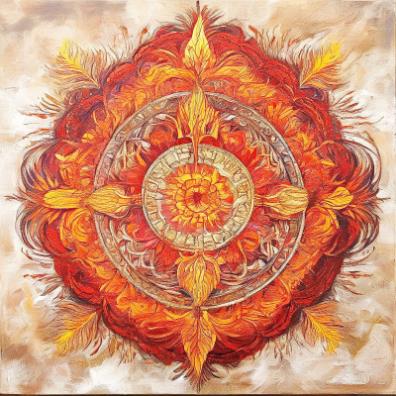
Sources about Mandalas
Daudén Roquet, C., Sas, C., & Potts, D. (2023). Exploring Anima: a brain–computer interface for peripheral materialization of mindfulness states during mandalaA mandala is a complex and symmetrical geometric design that encompasses a circular form and is often rich in symbolic meaning. Derived from the Sanskrit word for "circle," mandalas have been used throughout history in a variety of spiritual and cultural contexts, primarily within Hinduism and Buddhism. They serve as spiritual symbols and tools for meditation, representing the universe and More coloring. Human–Computer Interaction, Taylor & Francis.
Mantzios, M., & Giannou, K. (2018). When did coloring books become mindful? Exploring the effectiveness of a novel method of mindfulness-guided instructions for coloring books to increase …. Frontiers in Psychology.
Choi, H., Hahm, S. C., Jeon, Y. H., Han, J. W., Kim, S. Y., & Woo, J. M. (2021). The effects of mindfulness-based mandalaA mandala is a complex and symmetrical geometric design that encompasses a circular form and is often rich in symbolic meaning. Derived from the Sanskrit word for "circle," mandalas have been used throughout history in a variety of spiritual and cultural contexts, primarily within Hinduism and Buddhism. They serve as spiritual symbols and tools for meditation, representing the universe and More coloring, made in nature, on chronic widespread musculoskeletal pain: randomized trial. Healthcare, MDPI.
Curry, N. A., & Kasser, T. (2005). Can coloring mandalas reduce anxiety?. Art Therapy, Taylor & Francis.
GearBunch. (n.d.). MandalaA mandala is a complex and symmetrical geometric design that encompasses a circular form and is often rich in symbolic meaning. Derived from the Sanskrit word for "circle," mandalas have been used throughout history in a variety of spiritual and cultural contexts, primarily within Hinduism and Buddhism. They serve as spiritual symbols and tools for meditation, representing the universe and More Fashion and How to Wear the Trend. Retrieved from GearBunch
Chatterjee, S. (2022). Fashion Illustrations with MandalaA mandala is a complex and symmetrical geometric design that encompasses a circular form and is often rich in symbolic meaning. Derived from the Sanskrit word for "circle," mandalas have been used throughout history in a variety of spiritual and cultural contexts, primarily within Hinduism and Buddhism. They serve as spiritual symbols and tools for meditation, representing the universe and More Art. Bong Diva.
Blue Canary Press. (n.d.). Stephanie Smith. Retrieved from Blue Canary Press.
DailyArt Magazine. (n.d.). Contemporary art and mandalaA mandala is a complex and symmetrical geometric design that encompasses a circular form and is often rich in symbolic meaning. Derived from the Sanskrit word for "circle," mandalas have been used throughout history in a variety of spiritual and cultural contexts, primarily within Hinduism and Buddhism. They serve as spiritual symbols and tools for meditation, representing the universe and More motifs: Damien Hirst’s ‘Butterfly Mandalas’.
Mandalas for the Soul. (n.d.). MandalaA mandala is a complex and symmetrical geometric design that encompasses a circular form and is often rich in symbolic meaning. Derived from the Sanskrit word for "circle," mandalas have been used throughout history in a variety of spiritual and cultural contexts, primarily within Hinduism and Buddhism. They serve as spiritual symbols and tools for meditation, representing the universe and More Artists.
Modern Contemporary Artwork Trends. (n.d.). The Resurgence of MandalaA mandala is a complex and symmetrical geometric design that encompasses a circular form and is often rich in symbolic meaning. Derived from the Sanskrit word for "circle," mandalas have been used throughout history in a variety of spiritual and cultural contexts, primarily within Hinduism and Buddhism. They serve as spiritual symbols and tools for meditation, representing the universe and More SymbolismSymbolism was a late 19th-century art movement of French, Belgian, and Russian origin. Poets and fine artists were seeking to represent absolute truths using metaphorical images in reaction against realism and naturalism. Content of both images and poetry were suggestive contents to express mystical ideas, emotions, and states of mind. Paul Gauguin, Nave Nave Mahana (1869) The term was coined More in Contemporary Art.
HomeBNC. (2024). 23 Best MandalaA mandala is a complex and symmetrical geometric design that encompasses a circular form and is often rich in symbolic meaning. Derived from the Sanskrit word for "circle," mandalas have been used throughout history in a variety of spiritual and cultural contexts, primarily within Hinduism and Buddhism. They serve as spiritual symbols and tools for meditation, representing the universe and More Room Decor Ideas for a Pretty Home in 2024.
Woohome. (n.d.). 17 MandalaA mandala is a complex and symmetrical geometric design that encompasses a circular form and is often rich in symbolic meaning. Derived from the Sanskrit word for "circle," mandalas have been used throughout history in a variety of spiritual and cultural contexts, primarily within Hinduism and Buddhism. They serve as spiritual symbols and tools for meditation, representing the universe and More Decor Ideas To Rock Your Home.
The Architecture Designs. (2022). Energize Your Space with MandalaA mandala is a complex and symmetrical geometric design that encompasses a circular form and is often rich in symbolic meaning. Derived from the Sanskrit word for "circle," mandalas have been used throughout history in a variety of spiritual and cultural contexts, primarily within Hinduism and Buddhism. They serve as spiritual symbols and tools for meditation, representing the universe and More Art Wall Decor Ideas!
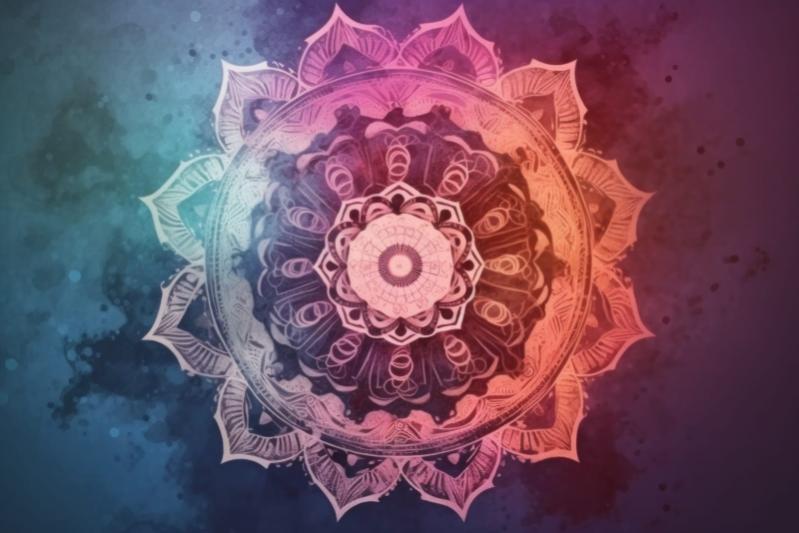
Quick Facts and Frequently Asked Questions
Q: What does mandalaA mandala is a complex and symmetrical geometric design that encompasses a circular form and is often rich in symbolic meaning. Derived from the Sanskrit word for "circle," mandalas have been used throughout history in a variety of spiritual and cultural contexts, primarily within Hinduism and Buddhism. They serve as spiritual symbols and tools for meditation, representing the universe and More mean?
A: A mandalaA mandala is a complex and symmetrical geometric design that encompasses a circular form and is often rich in symbolic meaning. Derived from the Sanskrit word for "circle," mandalas have been used throughout history in a variety of spiritual and cultural contexts, primarily within Hinduism and Buddhism. They serve as spiritual symbols and tools for meditation, representing the universe and More represents a complex and symmetrical geometric design that encompasses a circle, symbolizing unity, harmony, and infinity. Originating from Hindu and Buddhist traditions, it serves both decorative and deeply spiritual purposes. These designs are used in spiritual rituals and meditation, aiding in focus and spiritual guidance. Mandalas are seen not only as art but as tools for spiritual connection.
Q: Is mandalaA mandala is a complex and symmetrical geometric design that encompasses a circular form and is often rich in symbolic meaning. Derived from the Sanskrit word for "circle," mandalas have been used throughout history in a variety of spiritual and cultural contexts, primarily within Hinduism and Buddhism. They serve as spiritual symbols and tools for meditation, representing the universe and More religious?
A: While mandalas are deeply rooted in religious practices, particularly within Hinduism and Buddhism, they are not exclusively religious symbols. Many people appreciate mandalas for their aesthetic beauty and therapeutic benefits without adhering to a spiritual practice. In contemporary contexts, mandalas are utilized in various forms of art therapy and personal growth exercises. They transcend their original religious purposes to serve universal themes of peace and self-reflection.
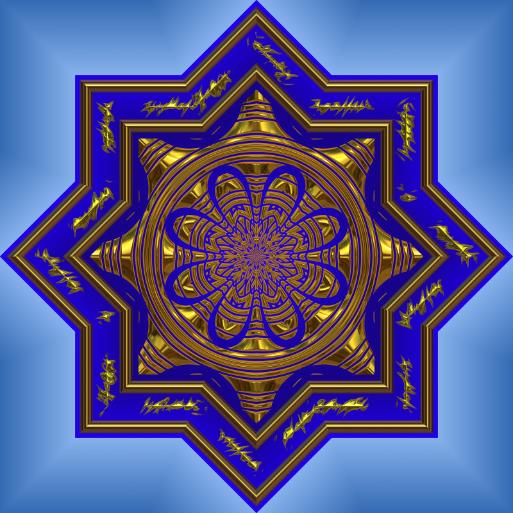
Q: How to mandalaA mandala is a complex and symmetrical geometric design that encompasses a circular form and is often rich in symbolic meaning. Derived from the Sanskrit word for "circle," mandalas have been used throughout history in a variety of spiritual and cultural contexts, primarily within Hinduism and Buddhism. They serve as spiritual symbols and tools for meditation, representing the universe and More dot art?
A: MandalaA mandala is a complex and symmetrical geometric design that encompasses a circular form and is often rich in symbolic meaning. Derived from the Sanskrit word for "circle," mandalas have been used throughout history in a variety of spiritual and cultural contexts, primarily within Hinduism and Buddhism. They serve as spiritual symbols and tools for meditation, representing the universe and More dot art involves applying paint or ink in a series of dots to create detailed mandalaA mandala is a complex and symmetrical geometric design that encompasses a circular form and is often rich in symbolic meaning. Derived from the Sanskrit word for "circle," mandalas have been used throughout history in a variety of spiritual and cultural contexts, primarily within Hinduism and Buddhism. They serve as spiritual symbols and tools for meditation, representing the universe and More patterns, typically using tools like dotting rods or the back end of paintbrushes. This style emphasizes precision and patience, creating a meditative practice as you focus on each dot. Beginners often start with simple patterns, gradually moving to more complex designs as their skills improve. The process not only fosters creativity but also promotes a calming effect, making it popular among artists and hobbyists.

Q: What is the purpose of a mandalaA mandala is a complex and symmetrical geometric design that encompasses a circular form and is often rich in symbolic meaning. Derived from the Sanskrit word for "circle," mandalas have been used throughout history in a variety of spiritual and cultural contexts, primarily within Hinduism and Buddhism. They serve as spiritual symbols and tools for meditation, representing the universe and More?
A: The primary purpose of a mandalaA mandala is a complex and symmetrical geometric design that encompasses a circular form and is often rich in symbolic meaning. Derived from the Sanskrit word for "circle," mandalas have been used throughout history in a variety of spiritual and cultural contexts, primarily within Hinduism and Buddhism. They serve as spiritual symbols and tools for meditation, representing the universe and More is to serve as a tool for meditation and a symbol of the universe in spiritual practices. It helps to focus the mind and establish a sacred space that aids in meditation. In art therapy, mandalas are used to assist in exploring complex feelings and fostering psychological healing. Their intricate designs draw the creator and viewer into a deeper awareness of the self and the profound nature of their thoughts and emotions.
Q: What is a mandalaA mandala is a complex and symmetrical geometric design that encompasses a circular form and is often rich in symbolic meaning. Derived from the Sanskrit word for "circle," mandalas have been used throughout history in a variety of spiritual and cultural contexts, primarily within Hinduism and Buddhism. They serve as spiritual symbols and tools for meditation, representing the universe and More used for?
A: A mandalaA mandala is a complex and symmetrical geometric design that encompasses a circular form and is often rich in symbolic meaning. Derived from the Sanskrit word for "circle," mandalas have been used throughout history in a variety of spiritual and cultural contexts, primarily within Hinduism and Buddhism. They serve as spiritual symbols and tools for meditation, representing the universe and More is used to facilitate meditation, promote spiritual enlightenment, and as a therapeutic art tool. Its design is intended to absorb the mind in such a way that distracting thoughts are kept at bay, allowing for a more profound spiritual or meditative experience. In therapy, mandalas help individuals express hidden emotions and manage stress. Additionally, they are popular in home decor, bringing a sense of peace and beauty to living spaces.
Q: Do mandalas have meaning?
A: Yes, mandalas often carry significant meaning tied to their colors, symbols, and the arrangement of their designs. Each aspect of a mandala’s design can symbolize different elements of spirituality, psychological insights, or universal truths according to the culture and context in which it was created. For example, a mandalaA mandala is a complex and symmetrical geometric design that encompasses a circular form and is often rich in symbolic meaning. Derived from the Sanskrit word for "circle," mandalas have been used throughout history in a variety of spiritual and cultural contexts, primarily within Hinduism and Buddhism. They serve as spiritual symbols and tools for meditation, representing the universe and More lotus flower might symbolize purity and spiritual awakening across various cultures. Interpreting these meanings can offer insight into the deeper levels of one’s psyche and spiritual path.
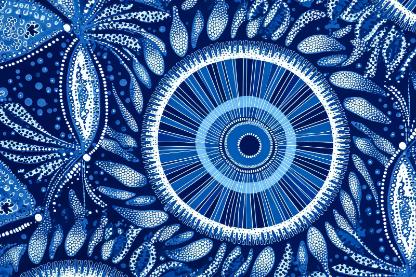
Q: What are mandalaA mandala is a complex and symmetrical geometric design that encompasses a circular form and is often rich in symbolic meaning. Derived from the Sanskrit word for "circle," mandalas have been used throughout history in a variety of spiritual and cultural contexts, primarily within Hinduism and Buddhism. They serve as spiritual symbols and tools for meditation, representing the universe and More examples that illustrate its use in different cultures?
A: MandalaA mandala is a complex and symmetrical geometric design that encompasses a circular form and is often rich in symbolic meaning. Derived from the Sanskrit word for "circle," mandalas have been used throughout history in a variety of spiritual and cultural contexts, primarily within Hinduism and Buddhism. They serve as spiritual symbols and tools for meditation, representing the universe and More examples abound across various cultures, each adding its unique interpretation. In Hinduism, mandalas are used as spiritual teaching tools, representing the universe and serving as a guide for various meditation practices. The Native American medicine wheel, a form of mandalaA mandala is a complex and symmetrical geometric design that encompasses a circular form and is often rich in symbolic meaning. Derived from the Sanskrit word for "circle," mandalas have been used throughout history in a variety of spiritual and cultural contexts, primarily within Hinduism and Buddhism. They serve as spiritual symbols and tools for meditation, representing the universe and More, is used for healing and rituals. In contemporary applications, mandalas are found in mandalaA mandala is a complex and symmetrical geometric design that encompasses a circular form and is often rich in symbolic meaning. Derived from the Sanskrit word for "circle," mandalas have been used throughout history in a variety of spiritual and cultural contexts, primarily within Hinduism and Buddhism. They serve as spiritual symbols and tools for meditation, representing the universe and More coloring books, which are popular for their therapeutic properties.
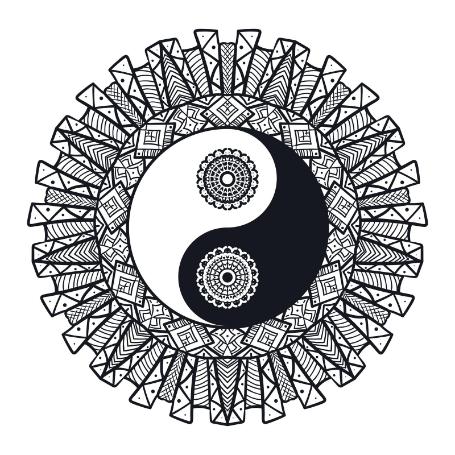
Q: How are mandalas and yantras connected?
A: Mandalas and yantras are both visual aids used in spiritual and meditation practices, primarily within Hindu and Buddhist traditions. While mandalas are generally more intricate and colored, yantras are typically more simplistic and monochromatic, focusing on geometric shapes. Both are tools to focus the mind during meditation and establish a sacred spiritual space. They are believed to represent the macrocosm and the microcosm, helping practitioners connect with the divine.
Q: What is the significance of mandalaA mandala is a complex and symmetrical geometric design that encompasses a circular form and is often rich in symbolic meaning. Derived from the Sanskrit word for "circle," mandalas have been used throughout history in a variety of spiritual and cultural contexts, primarily within Hinduism and Buddhism. They serve as spiritual symbols and tools for meditation, representing the universe and More and flower tattoo designs?
A: MandalaA mandala is a complex and symmetrical geometric design that encompasses a circular form and is often rich in symbolic meaning. Derived from the Sanskrit word for "circle," mandalas have been used throughout history in a variety of spiritual and cultural contexts, primarily within Hinduism and Buddhism. They serve as spiritual symbols and tools for meditation, representing the universe and More and flower tattoo designs combine the spiritual depth of mandalas with the natural beauty of flowers, often symbolizing growth, balance, and beauty. Such tattoos are popular for their aesthetic appeal as well as their meanings, which can vary from personal growth and enlightenment to a connection with nature. The circular nature of the mandalaA mandala is a complex and symmetrical geometric design that encompasses a circular form and is often rich in symbolic meaning. Derived from the Sanskrit word for "circle," mandalas have been used throughout history in a variety of spiritual and cultural contexts, primarily within Hinduism and Buddhism. They serve as spiritual symbols and tools for meditation, representing the universe and More paired with the organic shapes of flowers creates a visually harmonious design. These tattoos are often seen as representations of life’s cyclical nature and personal rebirth.
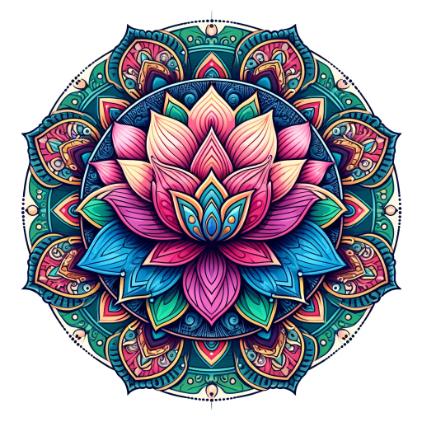
Q: Can you explain mandalaA mandala is a complex and symmetrical geometric design that encompasses a circular form and is often rich in symbolic meaning. Derived from the Sanskrit word for "circle," mandalas have been used throughout history in a variety of spiritual and cultural contexts, primarily within Hinduism and Buddhism. They serve as spiritual symbols and tools for meditation, representing the universe and More art drawing?
A: MandalaA mandala is a complex and symmetrical geometric design that encompasses a circular form and is often rich in symbolic meaning. Derived from the Sanskrit word for "circle," mandalas have been used throughout history in a variety of spiritual and cultural contexts, primarily within Hinduism and Buddhism. They serve as spiritual symbols and tools for meditation, representing the universe and More art drawing involves creating detailed and balanced geometric patterns within a circular format, which can be both a calming and intricate artistic endeavor. Artists start from the center, gradually working outward in symmetrical layers to maintain the mandala’s balance. This form of art can be therapeutic, as it requires focus and mindfulness, helping the artist to achieve a meditative state. Mandalas can be drawn using various mediums, including pen and ink, colored pencils, or paints, depending on the artist’s preference.
Q: How do mandalaA mandala is a complex and symmetrical geometric design that encompasses a circular form and is often rich in symbolic meaning. Derived from the Sanskrit word for "circle," mandalas have been used throughout history in a variety of spiritual and cultural contexts, primarily within Hinduism and Buddhism. They serve as spiritual symbols and tools for meditation, representing the universe and More with dots and mandalaA mandala is a complex and symmetrical geometric design that encompasses a circular form and is often rich in symbolic meaning. Derived from the Sanskrit word for "circle," mandalas have been used throughout history in a variety of spiritual and cultural contexts, primarily within Hinduism and Buddhism. They serve as spiritual symbols and tools for meditation, representing the universe and More with color differ in creation and impact?
A: MandalaA mandala is a complex and symmetrical geometric design that encompasses a circular form and is often rich in symbolic meaning. Derived from the Sanskrit word for "circle," mandalas have been used throughout history in a variety of spiritual and cultural contexts, primarily within Hinduism and Buddhism. They serve as spiritual symbols and tools for meditation, representing the universe and More with dots focuses on creating patterns using dotting techniques that can range from simple points to complex layered dots, offering a unique texture and depth to the artwork. On the other hand, a mandalaA mandala is a complex and symmetrical geometric design that encompasses a circular form and is often rich in symbolic meaning. Derived from the Sanskrit word for "circle," mandalas have been used throughout history in a variety of spiritual and cultural contexts, primarily within Hinduism and Buddhism. They serve as spiritual symbols and tools for meditation, representing the universe and More with color involves using various hues to fill intricate patterns, often enhancing the visual impact through contrasts and gradients. Both methods require precision and creativity, but the use of color can evoke different emotions and interpretations, making the mandalaA mandala is a complex and symmetrical geometric design that encompasses a circular form and is often rich in symbolic meaning. Derived from the Sanskrit word for "circle," mandalas have been used throughout history in a variety of spiritual and cultural contexts, primarily within Hinduism and Buddhism. They serve as spiritual symbols and tools for meditation, representing the universe and More visually striking and emotionally expressive. Dot mandalas often emphasize form and structure, bringing a different kind of meditative focus to the artwork.
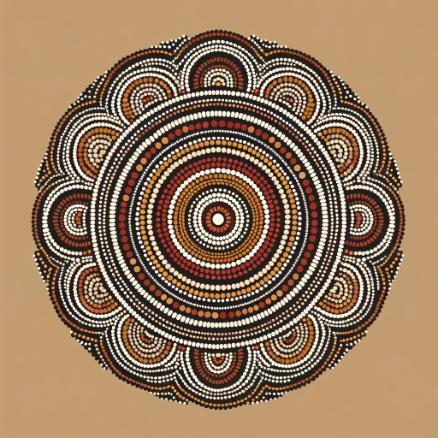
Q: What does a mandalaA mandala is a complex and symmetrical geometric design that encompasses a circular form and is often rich in symbolic meaning. Derived from the Sanskrit word for "circle," mandalas have been used throughout history in a variety of spiritual and cultural contexts, primarily within Hinduism and Buddhism. They serve as spiritual symbols and tools for meditation, representing the universe and More lotus flower symbolize?
A: The mandalaA mandala is a complex and symmetrical geometric design that encompasses a circular form and is often rich in symbolic meaning. Derived from the Sanskrit word for "circle," mandalas have been used throughout history in a variety of spiritual and cultural contexts, primarily within Hinduism and Buddhism. They serve as spiritual symbols and tools for meditation, representing the universe and More lotus flower is a powerful symbol in both Hindu and Buddhist iconography, representing purity, enlightenment, and rebirth. Its significance lies in how the lotus grows—rising from muddy waters and blossoming into a beautiful flower, it metaphorically depicts the spiritual journey from ignorance to wisdom. In mandalaA mandala is a complex and symmetrical geometric design that encompasses a circular form and is often rich in symbolic meaning. Derived from the Sanskrit word for "circle," mandalas have been used throughout history in a variety of spiritual and cultural contexts, primarily within Hinduism and Buddhism. They serve as spiritual symbols and tools for meditation, representing the universe and More art, incorporating the lotus flower often emphasizes spiritual awakening and the beauty of overcoming adversities. These symbols are commonly used in both traditional art forms and modern interpretations like tattoos and digital artwork.

Q: How does mandalaA mandala is a complex and symmetrical geometric design that encompasses a circular form and is often rich in symbolic meaning. Derived from the Sanskrit word for "circle," mandalas have been used throughout history in a variety of spiritual and cultural contexts, primarily within Hinduism and Buddhism. They serve as spiritual symbols and tools for meditation, representing the universe and More for healing work in therapeutic settings?
A: Using a mandalaA mandala is a complex and symmetrical geometric design that encompasses a circular form and is often rich in symbolic meaning. Derived from the Sanskrit word for "circle," mandalas have been used throughout history in a variety of spiritual and cultural contexts, primarily within Hinduism and Buddhism. They serve as spiritual symbols and tools for meditation, representing the universe and More for healing involves engaging individuals in the creation or coloring of mandalas as a form of art therapy. This practice helps to stabilize the inner chaos of a person’s mind, providing a soothing outlet for expressing inner thoughts and feelings non-verbally. The symmetry and balance required to create a mandalaA mandala is a complex and symmetrical geometric design that encompasses a circular form and is often rich in symbolic meaning. Derived from the Sanskrit word for "circle," mandalas have been used throughout history in a variety of spiritual and cultural contexts, primarily within Hinduism and Buddhism. They serve as spiritual symbols and tools for meditation, representing the universe and More promote mental order and harmony. Many therapists find that mandalaA mandala is a complex and symmetrical geometric design that encompasses a circular form and is often rich in symbolic meaning. Derived from the Sanskrit word for "circle," mandalas have been used throughout history in a variety of spiritual and cultural contexts, primarily within Hinduism and Buddhism. They serve as spiritual symbols and tools for meditation, representing the universe and More art therapy can significantly reduce stress, enhance focus, and contribute to overall emotional healing.
Q: What are mandalaA mandala is a complex and symmetrical geometric design that encompasses a circular form and is often rich in symbolic meaning. Derived from the Sanskrit word for "circle," mandalas have been used throughout history in a variety of spiritual and cultural contexts, primarily within Hinduism and Buddhism. They serve as spiritual symbols and tools for meditation, representing the universe and More animals and how are they incorporated into mandalaA mandala is a complex and symmetrical geometric design that encompasses a circular form and is often rich in symbolic meaning. Derived from the Sanskrit word for "circle," mandalas have been used throughout history in a variety of spiritual and cultural contexts, primarily within Hinduism and Buddhism. They serve as spiritual symbols and tools for meditation, representing the universe and More designs?
A: MandalaA mandala is a complex and symmetrical geometric design that encompasses a circular form and is often rich in symbolic meaning. Derived from the Sanskrit word for "circle," mandalas have been used throughout history in a variety of spiritual and cultural contexts, primarily within Hinduism and Buddhism. They serve as spiritual symbols and tools for meditation, representing the universe and More animals are artistic depictions of animals that are integrated into the geometric and symmetrical patterns of a mandalaA mandala is a complex and symmetrical geometric design that encompasses a circular form and is often rich in symbolic meaning. Derived from the Sanskrit word for "circle," mandalas have been used throughout history in a variety of spiritual and cultural contexts, primarily within Hinduism and Buddhism. They serve as spiritual symbols and tools for meditation, representing the universe and More. These designs often blend the natural form of an animal with elaborate mandalaA mandala is a complex and symmetrical geometric design that encompasses a circular form and is often rich in symbolic meaning. Derived from the Sanskrit word for "circle," mandalas have been used throughout history in a variety of spiritual and cultural contexts, primarily within Hinduism and Buddhism. They serve as spiritual symbols and tools for meditation, representing the universe and More patterns, symbolizing the unity of nature and spiritual elements. Incorporating animals into mandalas can bring additional layers of meaning, each animal bringing its own symbolismSymbolism was a late 19th-century art movement of French, Belgian, and Russian origin. Poets and fine artists were seeking to represent absolute truths using metaphorical images in reaction against realism and naturalism. Content of both images and poetry were suggestive contents to express mystical ideas, emotions, and states of mind. Paul Gauguin, Nave Nave Mahana (1869) The term was coined More such as strength, wisdom, or freedom. These designs are popular in various forms of art, including tattoo art, digital illustrations, and traditional canvas paintings.

Q: How are mandalaA mandala is a complex and symmetrical geometric design that encompasses a circular form and is often rich in symbolic meaning. Derived from the Sanskrit word for "circle," mandalas have been used throughout history in a variety of spiritual and cultural contexts, primarily within Hinduism and Buddhism. They serve as spiritual symbols and tools for meditation, representing the universe and More and skull tattoo designs interpreted?
A: MandalaA mandala is a complex and symmetrical geometric design that encompasses a circular form and is often rich in symbolic meaning. Derived from the Sanskrit word for "circle," mandalas have been used throughout history in a variety of spiritual and cultural contexts, primarily within Hinduism and Buddhism. They serve as spiritual symbols and tools for meditation, representing the universe and More and skull tattoo designs merge the spiritual symbolismSymbolism was a late 19th-century art movement of French, Belgian, and Russian origin. Poets and fine artists were seeking to represent absolute truths using metaphorical images in reaction against realism and naturalism. Content of both images and poetry were suggestive contents to express mystical ideas, emotions, and states of mind. Paul Gauguin, Nave Nave Mahana (1869) The term was coined More of mandalas with the often edgier, deeper themes associated with skulls. Skulls typically represent mortality and the finite nature of human life, while mandalas symbolize the universe and spiritual enlightenment. When combined, these tattoos can represent the cycle of life and death, or the connection between earthly existence and the spiritual journey. This powerful imagery serves as a reminder of the balance between life and death and the personal growth that can come from understanding this balance.
Q: What materials are used in mandalaA mandala is a complex and symmetrical geometric design that encompasses a circular form and is often rich in symbolic meaning. Derived from the Sanskrit word for "circle," mandalas have been used throughout history in a variety of spiritual and cultural contexts, primarily within Hinduism and Buddhism. They serve as spiritual symbols and tools for meditation, representing the universe and More crafts?
A: MandalaA mandala is a complex and symmetrical geometric design that encompasses a circular form and is often rich in symbolic meaning. Derived from the Sanskrit word for "circle," mandalas have been used throughout history in a variety of spiritual and cultural contexts, primarily within Hinduism and Buddhism. They serve as spiritual symbols and tools for meditation, representing the universe and More crafts can involve a variety of materials, ranging from traditional artistic supplies like paper, canvas, and colored sands to more unconventional items like stones, beads, and fabric. The choice of materials often depends on the project’s intent and the desired aesthetic effect. For example, creating a mandalaA mandala is a complex and symmetrical geometric design that encompasses a circular form and is often rich in symbolic meaning. Derived from the Sanskrit word for "circle," mandalas have been used throughout history in a variety of spiritual and cultural contexts, primarily within Hinduism and Buddhism. They serve as spiritual symbols and tools for meditation, representing the universe and More with beads or stones may be aimed at producing a three-dimensional effect for decorative purposes. Each material brings its own texture and quality to the mandalaA mandala is a complex and symmetrical geometric design that encompasses a circular form and is often rich in symbolic meaning. Derived from the Sanskrit word for "circle," mandalas have been used throughout history in a variety of spiritual and cultural contexts, primarily within Hinduism and Buddhism. They serve as spiritual symbols and tools for meditation, representing the universe and More, enhancing the sensory experience of the creator and viewer.
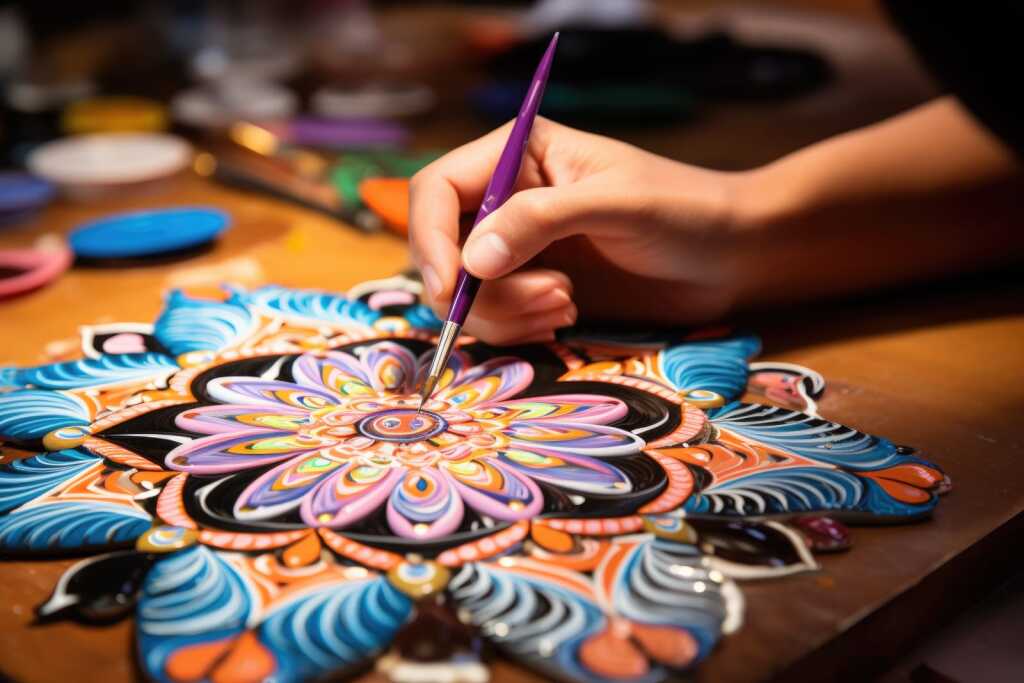
Q: How can beginners start learning mandalaA mandala is a complex and symmetrical geometric design that encompasses a circular form and is often rich in symbolic meaning. Derived from the Sanskrit word for "circle," mandalas have been used throughout history in a variety of spiritual and cultural contexts, primarily within Hinduism and Buddhism. They serve as spiritual symbols and tools for meditation, representing the universe and More art drawing?
A: Beginners interested in mandalaA mandala is a complex and symmetrical geometric design that encompasses a circular form and is often rich in symbolic meaning. Derived from the Sanskrit word for "circle," mandalas have been used throughout history in a variety of spiritual and cultural contexts, primarily within Hinduism and Buddhism. They serve as spiritual symbols and tools for meditation, representing the universe and More art drawing can start with simple tools such as a compass, a ruler, pencils, and paper to create basic circular designs with geometric patterns. Online tutorials and mandalaA mandala is a complex and symmetrical geometric design that encompasses a circular form and is often rich in symbolic meaning. Derived from the Sanskrit word for "circle," mandalas have been used throughout history in a variety of spiritual and cultural contexts, primarily within Hinduism and Buddhism. They serve as spiritual symbols and tools for meditation, representing the universe and More drawing books can provide step-by-step instructions and tips. It’s important for beginners to practice patience and allow themselves to enjoy the process of creation, understanding that skills will improve over time. Starting with basic shapes and gradually adding layers can help maintain clarity and structure in the designs while building confidence.
Q: What significance do mandalaA mandala is a complex and symmetrical geometric design that encompasses a circular form and is often rich in symbolic meaning. Derived from the Sanskrit word for "circle," mandalas have been used throughout history in a variety of spiritual and cultural contexts, primarily within Hinduism and Buddhism. They serve as spiritual symbols and tools for meditation, representing the universe and More with flowers tattoos hold?
A: MandalaA mandala is a complex and symmetrical geometric design that encompasses a circular form and is often rich in symbolic meaning. Derived from the Sanskrit word for "circle," mandalas have been used throughout history in a variety of spiritual and cultural contexts, primarily within Hinduism and Buddhism. They serve as spiritual symbols and tools for meditation, representing the universe and More with flowers tattoos blend the spiritual symbolismSymbolism was a late 19th-century art movement of French, Belgian, and Russian origin. Poets and fine artists were seeking to represent absolute truths using metaphorical images in reaction against realism and naturalism. Content of both images and poetry were suggestive contents to express mystical ideas, emotions, and states of mind. Paul Gauguin, Nave Nave Mahana (1869) The term was coined More of mandalas with the natural beauty and delicacy of floral designs. This combination often symbolizes growth, beauty, and the unfolding of spiritual awareness, much like flowers bloom from buds. Such tattoos can serve as personal reminders of one’s growth and the cyclical nature of life. They are popular choices for their aesthetic appeal and the meaningful depths they represent, often placed in visible areas to remind the wearer of their personal evolution and natural beauty.
Q: How is a mandalaA mandala is a complex and symmetrical geometric design that encompasses a circular form and is often rich in symbolic meaning. Derived from the Sanskrit word for "circle," mandalas have been used throughout history in a variety of spiritual and cultural contexts, primarily within Hinduism and Buddhism. They serve as spiritual symbols and tools for meditation, representing the universe and More with color different from a traditional monochrome mandalaA mandala is a complex and symmetrical geometric design that encompasses a circular form and is often rich in symbolic meaning. Derived from the Sanskrit word for "circle," mandalas have been used throughout history in a variety of spiritual and cultural contexts, primarily within Hinduism and Buddhism. They serve as spiritual symbols and tools for meditation, representing the universe and More?
A: A mandalaA mandala is a complex and symmetrical geometric design that encompasses a circular form and is often rich in symbolic meaning. Derived from the Sanskrit word for "circle," mandalas have been used throughout history in a variety of spiritual and cultural contexts, primarily within Hinduism and Buddhism. They serve as spiritual symbols and tools for meditation, representing the universe and More with color introduces a vibrant spectrum that can enhance the symbolic meanings of the design through the psychology of colors. Each color in a mandalaA mandala is a complex and symmetrical geometric design that encompasses a circular form and is often rich in symbolic meaning. Derived from the Sanskrit word for "circle," mandalas have been used throughout history in a variety of spiritual and cultural contexts, primarily within Hinduism and Buddhism. They serve as spiritual symbols and tools for meditation, representing the universe and More can evoke different emotions and energies, adding layers of depth to the symbolic interpretation of the artwork. Colorful mandalas are often used in therapeutic settings to help individuals explore feelings associated with different colors or to stimulate visual interest and emotional response. The use of color can transform the meditation experience, making it more engaging and personally resonant.
Q: What tools are recommended for mandalaA mandala is a complex and symmetrical geometric design that encompasses a circular form and is often rich in symbolic meaning. Derived from the Sanskrit word for "circle," mandalas have been used throughout history in a variety of spiritual and cultural contexts, primarily within Hinduism and Buddhism. They serve as spiritual symbols and tools for meditation, representing the universe and More for painting?
A: For those interested in mandalaA mandala is a complex and symmetrical geometric design that encompasses a circular form and is often rich in symbolic meaning. Derived from the Sanskrit word for "circle," mandalas have been used throughout history in a variety of spiritual and cultural contexts, primarily within Hinduism and Buddhism. They serve as spiritual symbols and tools for meditation, representing the universe and More for painting, fine brushes, acrylic or watercolor paints, and a detailed stencil can be essential tools. A steady hand and a good eye for symmetry are also crucial, as mandalas require precise lines and patterns. Beginners may find it helpful to start with larger patterns and gradually work towards more detailed designs as they gain confidence and control. High-quality paper or canvas provides a good foundation for painting, ensuring that the artwork remains vibrant and durable.
Q: Can mandalaA mandala is a complex and symmetrical geometric design that encompasses a circular form and is often rich in symbolic meaning. Derived from the Sanskrit word for "circle," mandalas have been used throughout history in a variety of spiritual and cultural contexts, primarily within Hinduism and Buddhism. They serve as spiritual symbols and tools for meditation, representing the universe and More wall art influence the atmosphere of a room?
A: Absolutely, mandalaA mandala is a complex and symmetrical geometric design that encompasses a circular form and is often rich in symbolic meaning. Derived from the Sanskrit word for "circle," mandalas have been used throughout history in a variety of spiritual and cultural contexts, primarily within Hinduism and Buddhism. They serve as spiritual symbols and tools for meditation, representing the universe and More wall art can significantly influence the atmosphere of a room, introducing a sense of calm and balance. The symmetry and intricate designs of mandalaA mandala is a complex and symmetrical geometric design that encompasses a circular form and is often rich in symbolic meaning. Derived from the Sanskrit word for "circle," mandalas have been used throughout history in a variety of spiritual and cultural contexts, primarily within Hinduism and Buddhism. They serve as spiritual symbols and tools for meditation, representing the universe and More art can be visually pleasing and mentally soothing, making it ideal for spaces meant for relaxation or contemplation. Additionally, mandalaA mandala is a complex and symmetrical geometric design that encompasses a circular form and is often rich in symbolic meaning. Derived from the Sanskrit word for "circle," mandalas have been used throughout history in a variety of spiritual and cultural contexts, primarily within Hinduism and Buddhism. They serve as spiritual symbols and tools for meditation, representing the universe and More wall art can serve as a focal point in interior design, drawing the eye and tying together various elements of the room’s décor. The choice of colors and the scale of the mandalaA mandala is a complex and symmetrical geometric design that encompasses a circular form and is often rich in symbolic meaning. Derived from the Sanskrit word for "circle," mandalas have been used throughout history in a variety of spiritual and cultural contexts, primarily within Hinduism and Buddhism. They serve as spiritual symbols and tools for meditation, representing the universe and More can also affect the room’s ambiance, either energizing the space or promoting tranquility.
Q: What is the role of a mandalaA mandala is a complex and symmetrical geometric design that encompasses a circular form and is often rich in symbolic meaning. Derived from the Sanskrit word for "circle," mandalas have been used throughout history in a variety of spiritual and cultural contexts, primarily within Hinduism and Buddhism. They serve as spiritual symbols and tools for meditation, representing the universe and More journal in personal growth?
A: A mandalaA mandala is a complex and symmetrical geometric design that encompasses a circular form and is often rich in symbolic meaning. Derived from the Sanskrit word for "circle," mandalas have been used throughout history in a variety of spiritual and cultural contexts, primarily within Hinduism and Buddhism. They serve as spiritual symbols and tools for meditation, representing the universe and More journal is a tool that combines the art of mandalaA mandala is a complex and symmetrical geometric design that encompasses a circular form and is often rich in symbolic meaning. Derived from the Sanskrit word for "circle," mandalas have been used throughout history in a variety of spiritual and cultural contexts, primarily within Hinduism and Buddhism. They serve as spiritual symbols and tools for meditation, representing the universe and More creation with the reflective practice of journaling, fostering deep personal growth and self-discovery. By incorporating mandalas into the pages, individuals can visually express emotions and thoughts that might be difficult to articulate in words. This process can aid in mindfulness and meditative practices, helping to clarify and soothe the mind. Regularly updating a mandalaA mandala is a complex and symmetrical geometric design that encompasses a circular form and is often rich in symbolic meaning. Derived from the Sanskrit word for "circle," mandalas have been used throughout history in a variety of spiritual and cultural contexts, primarily within Hinduism and Buddhism. They serve as spiritual symbols and tools for meditation, representing the universe and More journal can also track personal evolution over time, providing insight into emotional and spiritual development.
Q: How can mandalaA mandala is a complex and symmetrical geometric design that encompasses a circular form and is often rich in symbolic meaning. Derived from the Sanskrit word for "circle," mandalas have been used throughout history in a variety of spiritual and cultural contexts, primarily within Hinduism and Buddhism. They serve as spiritual symbols and tools for meditation, representing the universe and More for adults differ from those designed for children?
A: Mandalas for adults are typically more complex and detailed, offering a higher level of challenge that can aid in more profound meditation and concentration. These designs often incorporate intricate patterns that require more focus and can thus be more effective at reducing stress and anxiety among adults. Adult mandalas can also explore more abstract themes and sophisticated color palettes, catering to mature tastes and interests. In contrast, children’s mandalas are usually simpler and more colorful, designed to engage rather than challenge the young mind.
Q: What are the therapeutic benefits of mandalaA mandala is a complex and symmetrical geometric design that encompasses a circular form and is often rich in symbolic meaning. Derived from the Sanskrit word for "circle," mandalas have been used throughout history in a variety of spiritual and cultural contexts, primarily within Hinduism and Buddhism. They serve as spiritual symbols and tools for meditation, representing the universe and More animal coloring pages?
A: MandalaA mandala is a complex and symmetrical geometric design that encompasses a circular form and is often rich in symbolic meaning. Derived from the Sanskrit word for "circle," mandalas have been used throughout history in a variety of spiritual and cultural contexts, primarily within Hinduism and Buddhism. They serve as spiritual symbols and tools for meditation, representing the universe and More animal coloring pages combine the therapeutic benefits of both nature and geometry, offering a unique medium for relaxation and stress relief. Coloring these pages can help individuals focus their attention and reduce intrusive thoughts, providing a mental break from daily stresses. The animal elements can also evoke a sense of connection with nature, enhancing the calming effect. This activity is especially beneficial for those looking to unwind creatively while engaging with art that carries a more playful and familiar theme.
Q: What materials are best for creating a mandalaA mandala is a complex and symmetrical geometric design that encompasses a circular form and is often rich in symbolic meaning. Derived from the Sanskrit word for "circle," mandalas have been used throughout history in a variety of spiritual and cultural contexts, primarily within Hinduism and Buddhism. They serve as spiritual symbols and tools for meditation, representing the universe and More with clay?
A: Creating a mandalaA mandala is a complex and symmetrical geometric design that encompasses a circular form and is often rich in symbolic meaning. Derived from the Sanskrit word for "circle," mandalas have been used throughout history in a variety of spiritual and cultural contexts, primarily within Hinduism and Buddhism. They serve as spiritual symbols and tools for meditation, representing the universe and More with clay requires malleable, high-quality clay that can hold fine details without cracking. Tools like sculpting needles, small rollers, and various shaping tools can help in crafting the intricate designs typical of mandalas. Non-hardening clay can be used for practice or meditation exercises, while air-dry or kiln-fired clays are suitable for permanent artworks. Coloring the clay with paints or using colored clays can further enhance the visual impact of the mandalaA mandala is a complex and symmetrical geometric design that encompasses a circular form and is often rich in symbolic meaning. Derived from the Sanskrit word for "circle," mandalas have been used throughout history in a variety of spiritual and cultural contexts, primarily within Hinduism and Buddhism. They serve as spiritual symbols and tools for meditation, representing the universe and More, making the final piece even more striking.
Q: How do mandalaA mandala is a complex and symmetrical geometric design that encompasses a circular form and is often rich in symbolic meaning. Derived from the Sanskrit word for "circle," mandalas have been used throughout history in a variety of spiritual and cultural contexts, primarily within Hinduism and Buddhism. They serve as spiritual symbols and tools for meditation, representing the universe and More earrings serve as more than just jewelry?
A: MandalaA mandala is a complex and symmetrical geometric design that encompasses a circular form and is often rich in symbolic meaning. Derived from the Sanskrit word for "circle," mandalas have been used throughout history in a variety of spiritual and cultural contexts, primarily within Hinduism and Buddhism. They serve as spiritual symbols and tools for meditation, representing the universe and More earrings are not only fashion statements but also carry deeper spiritual or personal meanings for the wearer. These earrings often feature intricate designs that reflect the classic mandalaA mandala is a complex and symmetrical geometric design that encompasses a circular form and is often rich in symbolic meaning. Derived from the Sanskrit word for "circle," mandalas have been used throughout history in a variety of spiritual and cultural contexts, primarily within Hinduism and Buddhism. They serve as spiritual symbols and tools for meditation, representing the universe and More patterns known for promoting focus and balance. By wearing them, individuals might feel a connection to the calming and meditative qualities associated with mandalas. Additionally, such jewelry can serve as a personal reminder of one’s spiritual beliefs or intentions, integrating beauty with purpose.
Q: What makes mandalaA mandala is a complex and symmetrical geometric design that encompasses a circular form and is often rich in symbolic meaning. Derived from the Sanskrit word for "circle," mandalas have been used throughout history in a variety of spiritual and cultural contexts, primarily within Hinduism and Buddhism. They serve as spiritual symbols and tools for meditation, representing the universe and More kaleidoscope designs captivating?
A: MandalaA mandala is a complex and symmetrical geometric design that encompasses a circular form and is often rich in symbolic meaning. Derived from the Sanskrit word for "circle," mandalas have been used throughout history in a variety of spiritual and cultural contexts, primarily within Hinduism and Buddhism. They serve as spiritual symbols and tools for meditation, representing the universe and More kaleidoscope designs are captivating due to their dynamic symmetry and ever-changing patterns that engage the viewer both visually and mentally. These designs incorporate the repetitive, mirroring effect seen in traditional kaleidoscopes but use mandalaA mandala is a complex and symmetrical geometric design that encompasses a circular form and is often rich in symbolic meaning. Derived from the Sanskrit word for "circle," mandalas have been used throughout history in a variety of spiritual and cultural contexts, primarily within Hinduism and Buddhism. They serve as spiritual symbols and tools for meditation, representing the universe and More patterns to enhance the complexity and beauty. As the viewer looks through a kaleidoscope featuring mandalaA mandala is a complex and symmetrical geometric design that encompasses a circular form and is often rich in symbolic meaning. Derived from the Sanskrit word for "circle," mandalas have been used throughout history in a variety of spiritual and cultural contexts, primarily within Hinduism and Buddhism. They serve as spiritual symbols and tools for meditation, representing the universe and More patterns, the intricate details and symmetrical shapes shift, offering endless variations that delight and mesmerize. This constant change reflects the notion of impermanence and the dynamic nature of life itself.
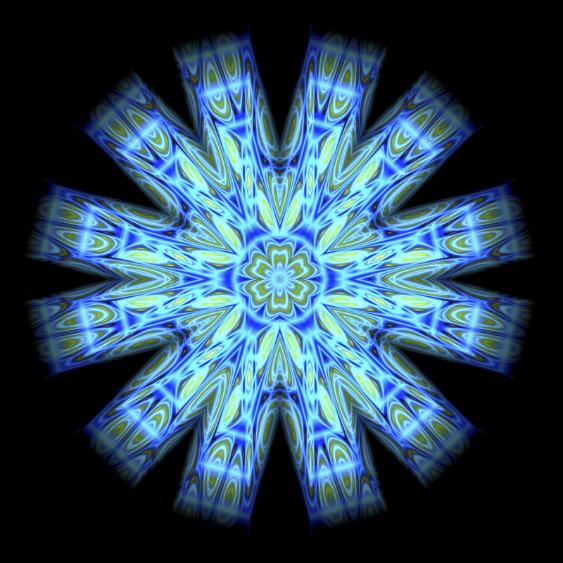
Q: Why might someone choose a mandalaA mandala is a complex and symmetrical geometric design that encompasses a circular form and is often rich in symbolic meaning. Derived from the Sanskrit word for "circle," mandalas have been used throughout history in a variety of spiritual and cultural contexts, primarily within Hinduism and Buddhism. They serve as spiritual symbols and tools for meditation, representing the universe and More and lotus flower tattoo?
A: Choosing a mandalaA mandala is a complex and symmetrical geometric design that encompasses a circular form and is often rich in symbolic meaning. Derived from the Sanskrit word for "circle," mandalas have been used throughout history in a variety of spiritual and cultural contexts, primarily within Hinduism and Buddhism. They serve as spiritual symbols and tools for meditation, representing the universe and More and lotus flower tattoo can symbolize a journey of enlightenment and personal growth, as both symbols are deeply rooted in spiritual traditions. The mandalaA mandala is a complex and symmetrical geometric design that encompasses a circular form and is often rich in symbolic meaning. Derived from the Sanskrit word for "circle," mandalas have been used throughout history in a variety of spiritual and cultural contexts, primarily within Hinduism and Buddhism. They serve as spiritual symbols and tools for meditation, representing the universe and More represents the universe and inner balance, while the lotus flower symbolizes purity and rebirth, often emerging from muddy waters unscathed. Combining these symbols into a tattoo can signify overcoming difficulties and reaching a state of clarity and enlightenment. Such tattoos are popular among those who appreciate their aesthetic beauty and spiritual significance.
Q: What considerations should be made when selecting mandalaA mandala is a complex and symmetrical geometric design that encompasses a circular form and is often rich in symbolic meaning. Derived from the Sanskrit word for "circle," mandalas have been used throughout history in a variety of spiritual and cultural contexts, primarily within Hinduism and Buddhism. They serve as spiritual symbols and tools for meditation, representing the universe and More wall decor?
A: When selecting mandalaA mandala is a complex and symmetrical geometric design that encompasses a circular form and is often rich in symbolic meaning. Derived from the Sanskrit word for "circle," mandalas have been used throughout history in a variety of spiritual and cultural contexts, primarily within Hinduism and Buddhism. They serve as spiritual symbols and tools for meditation, representing the universe and More wall decor, consider the size of the space and the existing color scheme to ensure the mandalaA mandala is a complex and symmetrical geometric design that encompasses a circular form and is often rich in symbolic meaning. Derived from the Sanskrit word for "circle," mandalas have been used throughout history in a variety of spiritual and cultural contexts, primarily within Hinduism and Buddhism. They serve as spiritual symbols and tools for meditation, representing the universe and More enhances the room without overwhelming it. The style of the mandalaA mandala is a complex and symmetrical geometric design that encompasses a circular form and is often rich in symbolic meaning. Derived from the Sanskrit word for "circle," mandalas have been used throughout history in a variety of spiritual and cultural contexts, primarily within Hinduism and Buddhism. They serve as spiritual symbols and tools for meditation, representing the universe and More should complement the overall decor theme, whether modern, traditional, or eclectic. It’s also important to think about the materials and finishes, as some may reflect light differently or require specific care. Lastly, the symbolismSymbolism was a late 19th-century art movement of French, Belgian, and Russian origin. Poets and fine artists were seeking to represent absolute truths using metaphorical images in reaction against realism and naturalism. Content of both images and poetry were suggestive contents to express mystical ideas, emotions, and states of mind. Paul Gauguin, Nave Nave Mahana (1869) The term was coined More or personal significance of the mandalaA mandala is a complex and symmetrical geometric design that encompasses a circular form and is often rich in symbolic meaning. Derived from the Sanskrit word for "circle," mandalas have been used throughout history in a variety of spiritual and cultural contexts, primarily within Hinduism and Buddhism. They serve as spiritual symbols and tools for meditation, representing the universe and More design can add a layer of meaning to the decor, making the space more personal and inviting.
Q: What are the benefits of mandalaA mandala is a complex and symmetrical geometric design that encompasses a circular form and is often rich in symbolic meaning. Derived from the Sanskrit word for "circle," mandalas have been used throughout history in a variety of spiritual and cultural contexts, primarily within Hinduism and Buddhism. They serve as spiritual symbols and tools for meditation, representing the universe and More online coloring for individuals unable to access physical coloring materials?
A: MandalaA mandala is a complex and symmetrical geometric design that encompasses a circular form and is often rich in symbolic meaning. Derived from the Sanskrit word for "circle," mandalas have been used throughout history in a variety of spiritual and cultural contexts, primarily within Hinduism and Buddhism. They serve as spiritual symbols and tools for meditation, representing the universe and More online coloring provides a convenient and accessible alternative for individuals who may not have physical coloring materials. This digital option allows users to experiment with a wide range of colors and designs without any preparation or cleanup, making it ideal for on-the-go stress relief. Online platforms often offer tools that enable more precise coloring than what might be achievable by hand, enhancing the user’s ability to create finely detailed mandalas. Additionally, this method can be particularly beneficial for those with physical limitations who find digital interfaces easier to use than traditional coloring tools.
Q: How does mandalaA mandala is a complex and symmetrical geometric design that encompasses a circular form and is often rich in symbolic meaning. Derived from the Sanskrit word for "circle," mandalas have been used throughout history in a variety of spiritual and cultural contexts, primarily within Hinduism and Buddhism. They serve as spiritual symbols and tools for meditation, representing the universe and More meditation enhance traditional meditation practices?
A: MandalaA mandala is a complex and symmetrical geometric design that encompasses a circular form and is often rich in symbolic meaning. Derived from the Sanskrit word for "circle," mandalas have been used throughout history in a variety of spiritual and cultural contexts, primarily within Hinduism and Buddhism. They serve as spiritual symbols and tools for meditation, representing the universe and More meditation enhances traditional meditation practices by providing a visual focus that helps stabilize the mind and prevent wandering thoughts. This form of meditation involves gazing at a mandalaA mandala is a complex and symmetrical geometric design that encompasses a circular form and is often rich in symbolic meaning. Derived from the Sanskrit word for "circle," mandalas have been used throughout history in a variety of spiritual and cultural contexts, primarily within Hinduism and Buddhism. They serve as spiritual symbols and tools for meditation, representing the universe and More and allowing the intricate patterns to draw the mind inward, promoting deeper concentration. The symmetry and balance of the mandalaA mandala is a complex and symmetrical geometric design that encompasses a circular form and is often rich in symbolic meaning. Derived from the Sanskrit word for "circle," mandalas have been used throughout history in a variety of spiritual and cultural contexts, primarily within Hinduism and Buddhism. They serve as spiritual symbols and tools for meditation, representing the universe and More design are thought to harmonize the viewer’s internal state, facilitating a more profound and peaceful meditation experience. As a result, practitioners often find that mandalaA mandala is a complex and symmetrical geometric design that encompasses a circular form and is often rich in symbolic meaning. Derived from the Sanskrit word for "circle," mandalas have been used throughout history in a variety of spiritual and cultural contexts, primarily within Hinduism and Buddhism. They serve as spiritual symbols and tools for meditation, representing the universe and More meditation can lead to increased mindfulness and a greater sense of calm.
Q: Can mandalaA mandala is a complex and symmetrical geometric design that encompasses a circular form and is often rich in symbolic meaning. Derived from the Sanskrit word for "circle," mandalas have been used throughout history in a variety of spiritual and cultural contexts, primarily within Hinduism and Buddhism. They serve as spiritual symbols and tools for meditation, representing the universe and More crafts also be a fun activity for children?
A: Absolutely, mandalaA mandala is a complex and symmetrical geometric design that encompasses a circular form and is often rich in symbolic meaning. Derived from the Sanskrit word for "circle," mandalas have been used throughout history in a variety of spiritual and cultural contexts, primarily within Hinduism and Buddhism. They serve as spiritual symbols and tools for meditation, representing the universe and More crafts are not only therapeutic and enjoyable for adults but can also be a fun and educational activity for children. These crafts help develop a child’s fine motor skills and attention to detail while allowing them to express creativity. Working with different colors and shapes in creating mandalas can also enhance children’s understanding of symmetry and design. Furthermore, the calming effect of focusing on mandalaA mandala is a complex and symmetrical geometric design that encompasses a circular form and is often rich in symbolic meaning. Derived from the Sanskrit word for "circle," mandalas have been used throughout history in a variety of spiritual and cultural contexts, primarily within Hinduism and Buddhism. They serve as spiritual symbols and tools for meditation, representing the universe and More crafts can be particularly beneficial for children who need activities that promote quiet concentration and relaxation.

Q: What should one look for when purchasing a mandalaA mandala is a complex and symmetrical geometric design that encompasses a circular form and is often rich in symbolic meaning. Derived from the Sanskrit word for "circle," mandalas have been used throughout history in a variety of spiritual and cultural contexts, primarily within Hinduism and Buddhism. They serve as spiritual symbols and tools for meditation, representing the universe and More kit?
A: When purchasing a mandalaA mandala is a complex and symmetrical geometric design that encompasses a circular form and is often rich in symbolic meaning. Derived from the Sanskrit word for "circle," mandalas have been used throughout history in a variety of spiritual and cultural contexts, primarily within Hinduism and Buddhism. They serve as spiritual symbols and tools for meditation, representing the universe and More kit, it is important to consider the contents of the kit to ensure it meets the user’s needs, whether they are a beginner or more advanced. A good mandalaA mandala is a complex and symmetrical geometric design that encompasses a circular form and is often rich in symbolic meaning. Derived from the Sanskrit word for "circle," mandalas have been used throughout history in a variety of spiritual and cultural contexts, primarily within Hinduism and Buddhism. They serve as spiritual symbols and tools for meditation, representing the universe and More kit typically includes a variety of tools such as stencils, markers, colored pencils, and possibly even a guidebook with instructions and tips. The quality of materials is crucial, as higher quality tools can provide a better coloring or drawing experience. Additionally, for those particularly interested in specific types of mandalas, such as those used in spiritual practices, kits designed for those purposes may include relevant symbols and designs.
Q: What considerations should be taken into account when choosing mandalaA mandala is a complex and symmetrical geometric design that encompasses a circular form and is often rich in symbolic meaning. Derived from the Sanskrit word for "circle," mandalas have been used throughout history in a variety of spiritual and cultural contexts, primarily within Hinduism and Buddhism. They serve as spiritual symbols and tools for meditation, representing the universe and More wall art for a therapy office?
A: When selecting mandalaA mandala is a complex and symmetrical geometric design that encompasses a circular form and is often rich in symbolic meaning. Derived from the Sanskrit word for "circle," mandalas have been used throughout history in a variety of spiritual and cultural contexts, primarily within Hinduism and Buddhism. They serve as spiritual symbols and tools for meditation, representing the universe and More wall art for a therapy office, consider the colors and complexity of the design, as these elements can significantly affect the atmosphere of the space. Soothing colors and less intricate designs tend to be more calming, which is ideal for a therapeutic environment. The size of the artwork should also be proportional to the room, ensuring it enhances rather than dominates the space. Finally, it’s important to choose a mandalaA mandala is a complex and symmetrical geometric design that encompasses a circular form and is often rich in symbolic meaning. Derived from the Sanskrit word for "circle," mandalas have been used throughout history in a variety of spiritual and cultural contexts, primarily within Hinduism and Buddhism. They serve as spiritual symbols and tools for meditation, representing the universe and More that resonates with a sense of peace and harmony, as it can aid in setting a tranquil tone for clients.
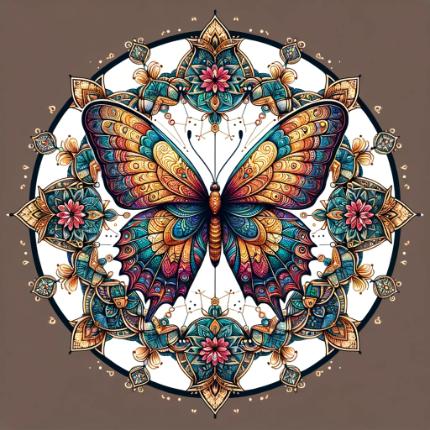
Q: How can incorporating mandalaA mandala is a complex and symmetrical geometric design that encompasses a circular form and is often rich in symbolic meaning. Derived from the Sanskrit word for "circle," mandalas have been used throughout history in a variety of spiritual and cultural contexts, primarily within Hinduism and Buddhism. They serve as spiritual symbols and tools for meditation, representing the universe and More with watercolor techniques enhance the art-making process?
A: Incorporating mandalaA mandala is a complex and symmetrical geometric design that encompasses a circular form and is often rich in symbolic meaning. Derived from the Sanskrit word for "circle," mandalas have been used throughout history in a variety of spiritual and cultural contexts, primarily within Hinduism and Buddhism. They serve as spiritual symbols and tools for meditation, representing the universe and More with watercolor techniques can significantly enhance the art-making process by adding a fluid and organic feel to the typically structured mandalaA mandala is a complex and symmetrical geometric design that encompasses a circular form and is often rich in symbolic meaning. Derived from the Sanskrit word for "circle," mandalas have been used throughout history in a variety of spiritual and cultural contexts, primarily within Hinduism and Buddhism. They serve as spiritual symbols and tools for meditation, representing the universe and More designs. Watercolors allow for the blending of colors and create a sense of depth through varying opacities, which can make the mandalaA mandala is a complex and symmetrical geometric design that encompasses a circular form and is often rich in symbolic meaning. Derived from the Sanskrit word for "circle," mandalas have been used throughout history in a variety of spiritual and cultural contexts, primarily within Hinduism and Buddhism. They serve as spiritual symbols and tools for meditation, representing the universe and More appear more dynamic and alive. This method encourages experimentation with color flow and the effects of water on paper, offering a meditative art experience as the water’s movement can be unpredictable and soothing. The resulting artwork often has a soft, dreamy quality that highlights the spiritual and calming nature of mandalas.
Q: What types of mandalaA mandala is a complex and symmetrical geometric design that encompasses a circular form and is often rich in symbolic meaning. Derived from the Sanskrit word for "circle," mandalas have been used throughout history in a variety of spiritual and cultural contexts, primarily within Hinduism and Buddhism. They serve as spiritual symbols and tools for meditation, representing the universe and More jewelry are most popular, and why?
A: The most popular types of mandalaA mandala is a complex and symmetrical geometric design that encompasses a circular form and is often rich in symbolic meaning. Derived from the Sanskrit word for "circle," mandalas have been used throughout history in a variety of spiritual and cultural contexts, primarily within Hinduism and Buddhism. They serve as spiritual symbols and tools for meditation, representing the universe and More jewelry include necklaces, bracelets, and earrings that feature mandalaA mandala is a complex and symmetrical geometric design that encompasses a circular form and is often rich in symbolic meaning. Derived from the Sanskrit word for "circle," mandalas have been used throughout history in a variety of spiritual and cultural contexts, primarily within Hinduism and Buddhism. They serve as spiritual symbols and tools for meditation, representing the universe and More patterns. These items are favored for their aesthetic appeal and the personal meanings they can carry. Many people choose mandalaA mandala is a complex and symmetrical geometric design that encompasses a circular form and is often rich in symbolic meaning. Derived from the Sanskrit word for "circle," mandalas have been used throughout history in a variety of spiritual and cultural contexts, primarily within Hinduism and Buddhism. They serve as spiritual symbols and tools for meditation, representing the universe and More jewelry as a form of personal expression or as a reminder of their spiritual or meditation practices. Additionally, because mandalas are symbols of balance and peace, wearing this type of jewelry can serve as a personal grounding tool or a conversation starter about personal beliefs and interests.
Q: How does mandalaA mandala is a complex and symmetrical geometric design that encompasses a circular form and is often rich in symbolic meaning. Derived from the Sanskrit word for "circle," mandalas have been used throughout history in a variety of spiritual and cultural contexts, primarily within Hinduism and Buddhism. They serve as spiritual symbols and tools for meditation, representing the universe and More meditation differ from other types of meditation?
A: MandalaA mandala is a complex and symmetrical geometric design that encompasses a circular form and is often rich in symbolic meaning. Derived from the Sanskrit word for "circle," mandalas have been used throughout history in a variety of spiritual and cultural contexts, primarily within Hinduism and Buddhism. They serve as spiritual symbols and tools for meditation, representing the universe and More meditation differs from other types of meditation primarily in its use of a visual focus—the mandala—which directs and sustains the practitioner’s attention through its intricate and colorful designs. This type of meditation can be particularly effective for those who find it difficult to focus or clear their minds using more traditional forms of meditation that rely on breath or mantras. The visual engagement provides a point of concentration that helps to quiet the mind and can lead to deep states of relaxation and clarity. Additionally, the symbolic meanings embedded in the mandalaA mandala is a complex and symmetrical geometric design that encompasses a circular form and is often rich in symbolic meaning. Derived from the Sanskrit word for "circle," mandalas have been used throughout history in a variety of spiritual and cultural contexts, primarily within Hinduism and Buddhism. They serve as spiritual symbols and tools for meditation, representing the universe and More can enhance the meditative experience by bringing layers of spiritual or personal significance to the practice.
Q: Why might someone incorporate a mandalaA mandala is a complex and symmetrical geometric design that encompasses a circular form and is often rich in symbolic meaning. Derived from the Sanskrit word for "circle," mandalas have been used throughout history in a variety of spiritual and cultural contexts, primarily within Hinduism and Buddhism. They serve as spiritual symbols and tools for meditation, representing the universe and More with butterfly design in their artwork or tattoos?
A: Integrating a mandalaA mandala is a complex and symmetrical geometric design that encompasses a circular form and is often rich in symbolic meaning. Derived from the Sanskrit word for "circle," mandalas have been used throughout history in a variety of spiritual and cultural contexts, primarily within Hinduism and Buddhism. They serve as spiritual symbols and tools for meditation, representing the universe and More with butterfly design in artwork or tattoos can symbolize transformation and renewal, as butterflies are often seen as symbols of change and personal growth. The combination with a mandalaA mandala is a complex and symmetrical geometric design that encompasses a circular form and is often rich in symbolic meaning. Derived from the Sanskrit word for "circle," mandalas have been used throughout history in a variety of spiritual and cultural contexts, primarily within Hinduism and Buddhism. They serve as spiritual symbols and tools for meditation, representing the universe and More, which represents balance and the universe, enhances this symbolismSymbolism was a late 19th-century art movement of French, Belgian, and Russian origin. Poets and fine artists were seeking to represent absolute truths using metaphorical images in reaction against realism and naturalism. Content of both images and poetry were suggestive contents to express mystical ideas, emotions, and states of mind. Paul Gauguin, Nave Nave Mahana (1869) The term was coined More, suggesting a journey towards harmony and self-realization. This design is visually appealing due to the contrast between the geometric patterns of the mandalaA mandala is a complex and symmetrical geometric design that encompasses a circular form and is often rich in symbolic meaning. Derived from the Sanskrit word for "circle," mandalas have been used throughout history in a variety of spiritual and cultural contexts, primarily within Hinduism and Buddhism. They serve as spiritual symbols and tools for meditation, representing the universe and More and the organic shapes of the butterfly. Such artwork can serve as a personal reminder of the wearer’s or creator’s evolving journey and the beauty in change.
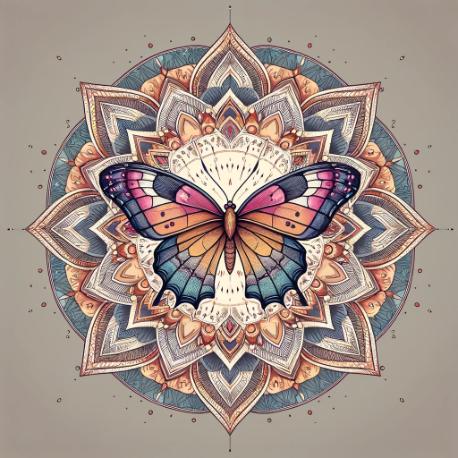
Q: What is the significance of a mandalaA mandala is a complex and symmetrical geometric design that encompasses a circular form and is often rich in symbolic meaning. Derived from the Sanskrit word for "circle," mandalas have been used throughout history in a variety of spiritual and cultural contexts, primarily within Hinduism and Buddhism. They serve as spiritual symbols and tools for meditation, representing the universe and More and roses tattoo?
A: A mandalaA mandala is a complex and symmetrical geometric design that encompasses a circular form and is often rich in symbolic meaning. Derived from the Sanskrit word for "circle," mandalas have been used throughout history in a variety of spiritual and cultural contexts, primarily within Hinduism and Buddhism. They serve as spiritual symbols and tools for meditation, representing the universe and More and roses tattoo combines the spiritual and universal symbolismSymbolism was a late 19th-century art movement of French, Belgian, and Russian origin. Poets and fine artists were seeking to represent absolute truths using metaphorical images in reaction against realism and naturalism. Content of both images and poetry were suggestive contents to express mystical ideas, emotions, and states of mind. Paul Gauguin, Nave Nave Mahana (1869) The term was coined More of the mandalaA mandala is a complex and symmetrical geometric design that encompasses a circular form and is often rich in symbolic meaning. Derived from the Sanskrit word for "circle," mandalas have been used throughout history in a variety of spiritual and cultural contexts, primarily within Hinduism and Buddhism. They serve as spiritual symbols and tools for meditation, representing the universe and More with the beauty and delicacy of roses, which often symbolize love and passion. This tattoo can represent a balance between spiritual depth and earthly desires, or it might symbolize the blooming of one’s soul and personal growth. The intricate details of both elements make this design both challenging and rewarding to create. It’s a popular choice for those who want a tattoo that represents both personal and universal themes, blending aesthetic appeal with meaningful depth.
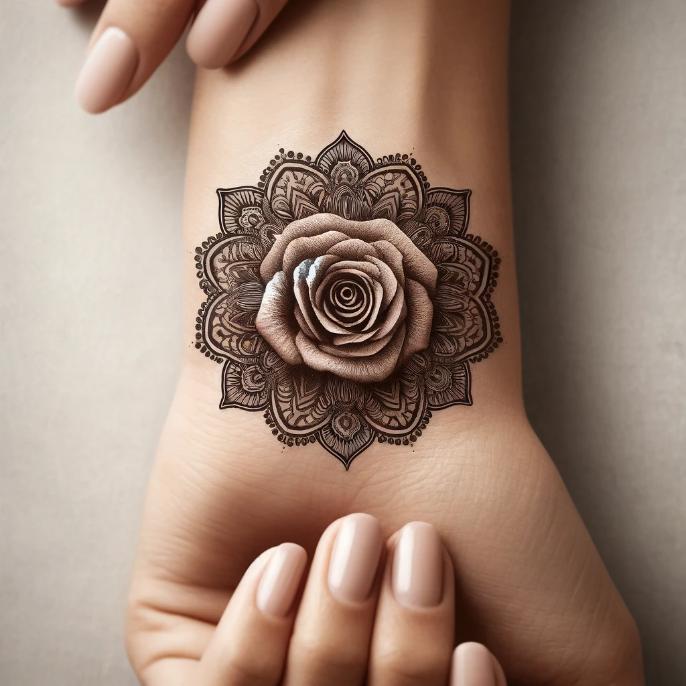
Q: How does one create a mandalaA mandala is a complex and symmetrical geometric design that encompasses a circular form and is often rich in symbolic meaning. Derived from the Sanskrit word for "circle," mandalas have been used throughout history in a variety of spiritual and cultural contexts, primarily within Hinduism and Buddhism. They serve as spiritual symbols and tools for meditation, representing the universe and More with leaves design?
A: Creating a mandalaA mandala is a complex and symmetrical geometric design that encompasses a circular form and is often rich in symbolic meaning. Derived from the Sanskrit word for "circle," mandalas have been used throughout history in a variety of spiritual and cultural contexts, primarily within Hinduism and Buddhism. They serve as spiritual symbols and tools for meditation, representing the universe and More with leaves involves incorporating leaf shapes and patterns into the mandalaA mandala is a complex and symmetrical geometric design that encompasses a circular form and is often rich in symbolic meaning. Derived from the Sanskrit word for "circle," mandalas have been used throughout history in a variety of spiritual and cultural contexts, primarily within Hinduism and Buddhism. They serve as spiritual symbols and tools for meditation, representing the universe and More design, using the natural contours and veins of the leaves as part of the artwork’s symmetry. This can be done by tracing real leaves, using them as stamps, or drawing them freehand within the geometric framework of a mandalaA mandala is a complex and symmetrical geometric design that encompasses a circular form and is often rich in symbolic meaning. Derived from the Sanskrit word for "circle," mandalas have been used throughout history in a variety of spiritual and cultural contexts, primarily within Hinduism and Buddhism. They serve as spiritual symbols and tools for meditation, representing the universe and More. The organic shapes of the leaves can add a unique, naturalistic touch to the precise and orderly mandalaA mandala is a complex and symmetrical geometric design that encompasses a circular form and is often rich in symbolic meaning. Derived from the Sanskrit word for "circle," mandalas have been used throughout history in a variety of spiritual and cultural contexts, primarily within Hinduism and Buddhism. They serve as spiritual symbols and tools for meditation, representing the universe and More, blending natural beauty with structured artistry. This style is particularly appealing for those who seek a connection with nature in their creative expression.

Q: What techniques are involved in mandalaA mandala is a complex and symmetrical geometric design that encompasses a circular form and is often rich in symbolic meaning. Derived from the Sanskrit word for "circle," mandalas have been used throughout history in a variety of spiritual and cultural contexts, primarily within Hinduism and Buddhism. They serve as spiritual symbols and tools for meditation, representing the universe and More with compass drawings?
A: MandalaA mandala is a complex and symmetrical geometric design that encompasses a circular form and is often rich in symbolic meaning. Derived from the Sanskrit word for "circle," mandalas have been used throughout history in a variety of spiritual and cultural contexts, primarily within Hinduism and Buddhism. They serve as spiritual symbols and tools for meditation, representing the universe and More with compass drawings involve using a compass to create perfect circles and radial symmetry, which are foundational for mandalaA mandala is a complex and symmetrical geometric design that encompasses a circular form and is often rich in symbolic meaning. Derived from the Sanskrit word for "circle," mandalas have been used throughout history in a variety of spiritual and cultural contexts, primarily within Hinduism and Buddhism. They serve as spiritual symbols and tools for meditation, representing the universe and More designs. Starting from the center, the artist uses the compass to draw concentric circles, which serve as guidelines for the intricate patterns that will fill each ring. This tool ensures that all elements radiate evenly from the center, maintaining the balance and harmony essential to mandalaA mandala is a complex and symmetrical geometric design that encompasses a circular form and is often rich in symbolic meaning. Derived from the Sanskrit word for "circle," mandalas have been used throughout history in a variety of spiritual and cultural contexts, primarily within Hinduism and Buddhism. They serve as spiritual symbols and tools for meditation, representing the universe and More aesthetics. The use of a compass is particularly helpful for those seeking precision in their designs, allowing for a clean and orderly creation process that enhances the meditative quality of making a mandalaA mandala is a complex and symmetrical geometric design that encompasses a circular form and is often rich in symbolic meaning. Derived from the Sanskrit word for "circle," mandalas have been used throughout history in a variety of spiritual and cultural contexts, primarily within Hinduism and Buddhism. They serve as spiritual symbols and tools for meditation, representing the universe and More.
Tools:
Check out our free online mandala drawing tool that allows you to create mandalaA mandala is a complex and symmetrical geometric design that encompasses a circular form and is often rich in symbolic meaning. Derived from the Sanskrit word for "circle," mandalas have been used throughout history in a variety of spiritual and cultural contexts, primarily within Hinduism and Buddhism. They serve as spiritual symbols and tools for meditation, representing the universe and More outlines from your web browser.

You might also enjoy reading the following articles by Pigment Pool:
Celebrated, wronged, or neglected: 21 female painters of modernism that shaped the art world
Pop Art Ideas: Easy Painting Techniques to Capture the Warhol Essence
Ultimate Guide to the Best Colored Pencils – Must-Know Facts for Hobbyists and Artists
The Best Acrylic Paint Set for Artists and Hobbyists In 2024

